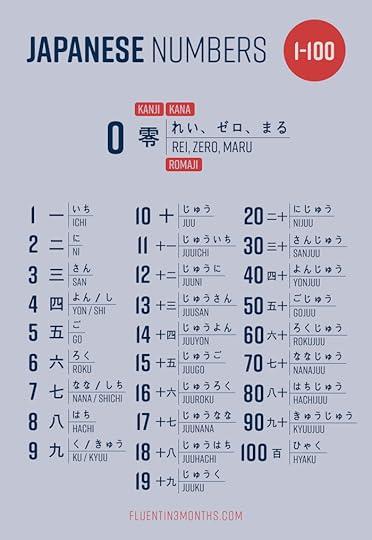Benny Lewis's Blog, page 14
January 1, 2023
How to Learn a Language in 2023 – Ultimate Guide with 40+ Language Hacks
Have you decided it’s time to get serious about learning a new language in 2023?
That’s amazing! Learning a language is a journey of improvement and growth that opens you many doors.
However, it’s also a commitment that requires dedication and a plan, (and I certainly know something about that)…
I’m truly excited for you and your new language adventure, and I want to help you out. In this post, I’ve gathered the best advice we’ve shared on the Fluent in 3 Months website on how to learn a new language through our method of language hacking.
We’re one of the most popular language learning websites in the world, and that’s because our language hacking methods work. When you put them into practice, they’re really powerful.
Whether you’re just starting out or you want to change up your learning strategy, this guide will be your go-to.
function runSplitTest(){var randomNumber = Math.floor(Math.random() * 2) + 1console.log(randomNumber)var copy = "";if (randomNumber == 3){ copy = '<i>A note from the Fluent in 3 Months team before we get started: You can chat away in a new language for at least 15 minutes with the "Fluent in 3 Months" method. All it takes is 90 days. <a href="https://www.fluentin3months.com/other... this link to find out more.</a></i>'} else { copy = '<i>A note from the Fluent in 3 Months team before we get started: You can chat away with a native speaker for at least 15 minutes with the "Fluent in 3 Months" method. All it takes is 90 days. <a href="https://www.fluentin3months.com/other... this link to find out more.</a></i>'}var copyToChange = document.querySelector("p.copyText").innerHTML = copy;}runSplitTest();Table of contentsBuild a Language Learning MindsetGet Out of Your Comfort ZoneWelcome Mistakes, Don’t Be Scared of ThemIgnore the Fear of Being Rejected or Getting EmbarrassedEmbrace a Child’s Mindset When It Comes to LearningDon’t Focus on Excuses That Would Kill Your MotivationLet Go of ShynessAdd a Countdown Timer to Your Learning PlanBecome a “Language Hacker”Speak From Day OneLearn the DIY MethodImmerse Yourself at HomeWhen You’re Stuck, Switch Things UpWhen “You Don’t Have Time” for Language Learning, Use Time Hacks to Make TimeTake 1-1 Language Lessons – And Do Your Prep BeforehandWork on Building Language IslandsMake the Most of Your Time with the Pomodoro TechniqueApply the Pareto Principle to Minimize Effort and Maximize ResultsCreate a Language Immersion RetreatApply These Language Hacks to Speak from Day OneFind An Online Language TutorGet Connected with Tutors on PreplySearch for Tutors on italkiSeek Out a Language Exchange PartnerGet Speaking on Your Own Terms – From Day OneStop Being ShyWork on Your Pronunciation From the StartPractice Rolling Your “R” Until You SucceedStart Conversations without it Feeling AwkwardRecord Yourself to Clean Up Your SpeechGet Lots of Listening PracticeBeware of Passive ListeningMake the Most Out of PodcastsListen to Podcasts in Spanish (or French, German, Chinese, Japanese – Whatever Language You’re Learning!)Dive Deep into Language Content on LingQThe “Transcription Technique” Might Be What You NeedPractice Reading and Writing in Your New LanguageBuild Your Subconscious Base in Your Target LanguageJoin a Book ClubWhen You Need to Write in Your Target Language, “Write Like You Speak”Build a Bigger VocabularyGet Organised About Vocabulary LearningBoost Your Memory With Memory Palaces and Other MnemonicsLearn the Best Mnemonics With the Magnetic Memory MethodRemember the Stressed Syllable and You’ll Remember the WordMaximise Your Vocab Memory With SRSUse Anki’s Great Flashcard System for Long-Lasting Vocabulary MemoryGet Your Vocabulary From Frequency ListsMake Google Images Your Best FriendLevel Up Your Grammar SkillsOnly Focus on the Grammar That You NeedMake Grammar Fun to Learn by Using GamesDon’t Fuss Over Sentence StructureMore Tips to Get You Learning FasterGo On a Treasure HuntYou Can Relearn a LanguageTravelling Abroad and Learning a Language Is PossibleHow to Learn a New Language as an Online TeacherThe Right Time to Start Learning a New Language Is Now!Let’s get started!
Build a Language Learning MindsetThe most common reason people drop language learning is mental blocks.
That’s why the first thing you need to do, as a language hacker, is work on your mindset.
Here’s how to do just that.
Get Out of Your Comfort Zone
“By getting comfortable, I stopped trying new things. I stopped looking at the material from different angles. And when I get comfortable, I can only get so far.
“Only by stepping outside your comfort zone can you have a breakthrough and see the results you’re anticipating.” — Shannon Kennedy
From: Language Learners! Why Your Comfort Zone = the Danger Zone
Welcome Mistakes, Don’t Be Scared of Them“The more mistakes you make the faster you will improve and the less they will bother you. The best cure to feeling uncomfortable about making mistakes is to make more mistakes.” — Benny Lewis
From: Mistakes are the ONLY Way to Learn a Language
Ignore the Fear of Being Rejected or Getting Embarrassed
“That embarrassed feeling is you focusing on the negative of the experience.
“Instead, focus on the positive. How did you move forward after that particular rejection?” — Shannon Kennedy
From: How to Get Over the Fear of Rejection
Embrace a Child’s Mindset When It Comes to Learning“I’d like to share the exact techniques that children learn languages — and as you’ll see adults can use these techniques too, though sometimes in a different way to children. After reading this article, I think you’ll be ready to agree that the idea that ‘children are better language learners’ is just an excuse adult learners make to avoid language learning.” — Georgia Boote
From: How Children Learn Languages – and What You Can Learn from Them
Don’t Focus on Excuses That Would Kill Your Motivation“Coming face-to-face with a roadblock will destroy your motivation unless you know how to get around it. That’s why I call these roadblocks ‘motivation killers’.” — Shannon Kennedy
From: Why Language Learners Quit – The 7 Key “Motivation Killers” (Plus, How to Beat Them)
Let Go of Shyness“Unless you suffer from a social anxiety disorder or experience severe, constant shyness, YOU ARE NOT SHY. Stop describing yourself as such.” — Benny Lewis
From: The Shy “Delusion”: Stop Being Shy and Just Start Speaking!
Add a Countdown Timer to Your Learning Plan
“A long-sighted learner is only interested in one thing: they want to be equivalent to a native. Three months or any other short period where you set yourself an ambitious goal is clearly not enough to reach native level, so they have this idea that anything else is not good enough.
“Well this attitude is not good enough. It’s wasteful and impractical.” — Benny Lewis
From: Why impatience is a virtue and taking your time is wasting your time
Become a “Language Hacker”If you want to succeed at learning a new language, you need a great study plan. You also have to find language hacking methods that work for you – and here are some of our favourites.
Speak From Day One
“I just decided ‘I’m going to start speaking the language. I’m going to get all of these excuses and ignore them. That I’m not ready and I need to work more or I’m not intelligent enough to learn a language.’
“I just started speaking it and everything changed.” — Benny Lewis
From: “Benny’s TEDx talk: Speak from Day One
Learn the DIY Method
“Self-study makes you more self-sufficient, as you learn you can get better at a skill without the help of a paid expert.
”I really like the idea of the DIY ethic, which is similar to self study. This works on the idea that we’re all capable of doing most things by ourselves – if only we’d take the time to learn. This is something that I strongly believe, since I know that everyone has the ability to learn a foreign language.”
From: How to Learn a Language by Self-Study
Immerse Yourself at Home“It’s possible to create an immersive environment at home. For example, you can use social media to find native communities to chat with. Switching your phone’s language or watching shows in your target language will help you achieve an immersive experience, too.” — Katie Harris
From: The Best Way to Learn a Language [Scientifically Proven, Polyglot Tested]
When You’re Stuck, Switch Things Up
“This may seem obvious, but if what you are doing now isn’t working to bring you forward then what you are doing now is not good enough.
“I’ve lost count of the number of times someone has emailed me to say something along the lines of “no matter how much I study, I’m not progressing!” Well, then clearly just more of the same thing is not going to help.” — Benny Lewis
From: How to get over a plateau stopping you from making progress
When “You Don’t Have Time” for Language Learning, Use Time Hacks to Make Time
“For busy language learners, it can feel like your constant thought is ‘I don’t have enough time!’
“I’d like to share some simple shifts you can make in your life so you can manage your time – and have more time available for language learning.” — Shannon Kennedy
From: 24 Time Hacking Tips from Language Hacker Benny Lewis
Take 1-1 Language Lessons – And Do Your Prep Beforehand
“During each lesson, I go through the script with my tutor. He or she asks questions about what I’ve shared, and I aim to reply in my target language.
“I look out for when I want to say something, but can’t quite say it. I ask myself “What words do I need to know so that I could say this thing?” These are the words I need to learn, so I note them down.” — Shannon Kennedy
From: New Language in 90 Days: My 7-Step Formula
Work on Building Language Islands
“In language learning, language islands represent specific topics that you’re very comfortable talking about in your target language.
Imagine you’ve just started learning your new language. It’s like being lost at sea, you don’t have anything to grab onto. Are you going to try to find an entire continent, this would be you speaking the language fluently?
It’s much easier to make a little language island that you can feel comfortable on. There, you will have the time and confidence to keep building other language islands.
Eventually, there won’t be water for you to drown in.”
From: The Beginner’s Guide to Language Islands [All the Answers + Examples]
If you’d rather watch a video to understand the concept, we’ve got you covered!
Make the Most of Your Time with the Pomodoro Technique
“The Pomodoro Technique is a productivity-enhancing method that makes you work for intense 25-minute blocks of time separated by 5- to 30-minute breaks.
I’ve used this technique for learning languages, but also for work and in other aspects of my life. It’s also popular among students to complete long assignments.”
From: The Pomodoro Technique: How to Boost Your Productivity [Full Guide + Examples]
You can also check out this video on the topic!
Apply the Pareto Principle to Minimize Effort and Maximize Results
“When I decided to start my blog, I could have aimed for perfection and decided I needed to get as much expertise in writing blogs as I possibly could.
But did I spend years researching how to blog? Or took a degree course on how to become a writer? I didn’t do that. I figured out what was the smallest amount of effort that I could apply to this business to launch it as quickly as possible.
I’ve done something similar with language learning.”
From: The Pareto Principle (80-20 Rule): Minimize the Effort, Maximize the Results
You can watch my video on the Pareto Principle!
Create a Language Immersion Retreat“A language immersion retreat is a chance to take some time off from your daily routine both in work and language learning to entirely live in the language.” — Elfin Waters
From: How (And Why) To Create Your Very Own Language Immersion Retreat
Apply These Language Hacks to Speak from Day OneAt Fluent in 3 Months we’re big about speaking from the first day of your language mission. This is what our students do in order to have a 15-minute conversation in their target language after 90 days!
Find An Online Language Tutor“[Having an online tutor] doesn’t require living in the country, is dramatically cheaper than in-person private lessons, requires zero travel time for both the teacher and the student, and more!” — Benny Lewis
From: How to Find the Right Online Language Tutor for Your Language Classes
Get Connected with Tutors on Preply“Preply connects language students with private tutors for 1-1 lessons. Language lessons take place online in a virtual classroom. All you need is a computer, WiFi and a sense of adventure.” — Elizabeth Bruckner
From: Preply Review – a Detailed and Honest Review of the Preply Language Tutor Platform
Search for Tutors on italki“italki is a website that connects language students with private tutors for 1-1 lessons. Language lessons take place online on platforms like Skype or Zoom. All you need is a device with WiFi connection.” — Benny Lewis
From: Review of italki: Find native teachers and free language exchanges to learn a language via Skype
Seek Out a Language Exchange Partner
“With a language exchange, you find someone who speaks the language you’re learning. You spend some time chatting with them in English. In return, they spend some time chatting with you in your target language.
“When language exchanges go right, they’re one of the best things you can do to improve your language skills and boost your confidence.” — Shannon Kennedy
From: Language Exchange Partners: The Ultimate Guide
Get Speaking on Your Own Terms – From Day One“The truth was, I was afraid of speaking. But I also felt drawn to speaking. I decided to find a way that I could start speaking on my terms. I was determined to find ways to speak that would feel right, work with my personality and make me a little more comfortable.” — Shannon Kennedy
From: How to Practise Speaking a New Language… Without the Anxiety Rush!
Stop Being Shy
“This is another post that is going to ruffle some feathers, but it has to be said.
Unless you suffer from a social anxiety disorder or experience severe, constant shyness, YOU ARE NOT SHY. Stop describing yourself as such.”
From: The Shy “Delusion”: Stop Being Shy and Just Start Speaking!
Work on Your Pronunciation From the Start“The more you speak and hear the language, the more you will adapt and pronounce words properly. But that’s assuming you’re actually speaking and listening all the time. Many beginners don’t do enough speaking or listening in their target language.” — Benny Lewis
From: Learn to Sound like a Native and Pronounce Words in Any Language
Practice Rolling Your “R” Until You Succeed
“You may be surprised to hear that you can already produce a rolled ‘r’ sound!
When you say the word “butter” quickly, the ‘tt’ sound is made by flapping your tongue against the roof of your mouth, rather than a normal ‘t’ sound (like tree). USE THIS.”
From: 6 Easy Ways to Roll Your ‘R’
Start Conversations without it Feeling Awkward
“Speaking conversationally is usually just about knowing the right thing to say in any given situation. That’s rarely taught in classrooms.
“This article answers the questions ‘How to start a conversation in another language?’ and ‘What’s the best conversation starter to have things to talk about, without the awkwardness?’” — Benny Lewis
From: 150+ Conversation Starters So You Can Confidently Talk to Anyone, in Any Language
Record Yourself to Clean Up Your Speech“I was so hesitant to kick off my French learning but the 2-minute speaking practice of the Fluent in 3 Months Challenge came to my rescue. It’s a strategy that has effectively boosted my confidence.” — TY
From: The 2-Minute Speaking Practice: Recording Myself to Stop Saying “Like” All the Time
Get Lots of Listening PracticeAt Fi3M, we focus a lot on the speaking part of learning a language. But to keep on speaking, you have to listen too…
Beware of Passive Listening
“With passive listening, you simply listen to a recording of your target language or watch a movie. The idea is that even though you don’t understand it now, over time you will start to understand more and more through a natural process of absorption.
“The problem is… it doesn’t really work.” — Andrew Barr
From: How to Improve Your Listening Skills as a Language Learner – an In-Depth Guide
Make the Most Out of Podcasts“Podcasts are one of the first places I turn to when I’m starting in a new language. Why? Because I’ve found that speaking from day one is the best way to learn a language. Podcasts give the opportunity to listen to your new language being spoken. As you listen, you’ll learn correct pronunciation.” — Benny Lewis
From: Language Learning Podcasts: Can You Learn a Language by Listening to Podcasts?
(Psss… Tune in to the Language Hacking Podcast for many, many more tips on language learning! I interview polyglots and language hackers from all around the world to bring the best language learning hacks to my listeners!)
Listen to Podcasts in Spanish (or French, German, Chinese, Japanese – Whatever Language You’re Learning!)“Podcasts are a great way to learn a language, but don’t just rely on those aimed for language learners. Find a podcast in your target language, preferably hosted by a native speaker, about a topic that interests you!” — Benny Lewis
Find how here: How to Download Free Native-Spoken Podcasts & MP3s in Almost Any Language
Dive Deep into Language Content on LingQ“LingQ is a language learning app with thousands of hours of “real world” audio and written content, plus tools to help users learn vocab and grammar.” — David Masters
From: LingQ Review: An Honest, In-Depth Review of the LingQ Language Learning Tool
The “Transcription Technique” Might Be What You Need“With the Transcription Technique you’ll simultaneously practice listening and writing, then reading and speaking. Every minute I’ve spent on this technique, I’ve noticed my language skills improving.” — Guest Author
From: How Using Transcriptions Can Improve Your Listening Skills
Practice Reading and Writing in Your New LanguageIf you’re a fan of reading, you should use that in your language learning journey!
Build Your Subconscious Base in Your Target Language“Reading in your target language improves your ability to intuitively understand grammar structures and vocabulary. This gives your brain a large base of subconscious passive knowledge to work from, giving you an advantage in the active language domains and therefore boosting you to fluency.” — Matt Anderson
From: Reading in Your Target Language Can Boost You to Fluency – Here’s How!
Join a Book Club“Sharing the experience with other readers increases your enthusiasm and gives you more learning options! You can learn from your peers, as well as from the teacher, if one is running the club.” — Laura Scaramella
From: How Joining a Book Club Will Help You Learn Italian Fast
When You Need to Write in Your Target Language, “Write Like You Speak”“‘Write like you speak’ was the best piece of advice I ever received from a writing mentor, who was helping me with my English writing skills. And, today, I’m going to urge you to do the same in your target language.” — James Johnson
From: How to Improve Your Basic Writing Skills: Hacks for Language Learners
Build a Bigger VocabularyI don’t know about you, but when I was a student, I would cram to pass some exams. A week later, everything was gone.
Us language learners have to learn a lot of new vocabulary all the time. In this situation, cramming doesn’t work. So how not to forget all the vocabulary you learn after a few days?
Get Organised About Vocabulary Learning“I love me some good notes, and every time I observe what my most successful learners do, it’s that they really organise themselves extremely well. Buy a large notebook or a project pad, work with vocabulary sections, exercise sections and grammar sections.” — Kerstin Cable
From: How To Be Organised About Learning New Vocabulary
Boost Your Memory With Memory Palaces and Other Mnemonics“A mnemonic is a learning device that helps you recall difficult information. One of the most powerful types of mnemonics is the Memory Palace. You can use a Memory Palace to memorize hundreds of words and phrases from your language of choice at will.” — Anthony Metivier
From: How to Use a Memory Palace to Boost Your Vocabulary
Learn the Best Mnemonics With the Magnetic Memory Method“The Magnetic Memory Method is a set of video courses that teaches the fundamentals of memory palaces and mnemonic devices for memorizing different types of information.” — Holly Keenan
From: Magnetic Memory Method: An In-Depth Review from a Language Learner
Remember the Stressed Syllable and You’ll Remember the Word“Research has found that if you focus only on the stressed syllable of a word when trying to memorize it, your brain is able to remember the unstressed syllables without much effort” . — Yitzhak Magoon
From: How to Use Visual Memory Techniques to Build a Conversational Vocabulary
Maximise Your Vocab Memory With SRS“Spaced Repetition System (SRS) is a presentation method that gives you information before you would forget it. It makes sure that the information stays constantly fresh in your mind.” — Benny Lewis
From: Spaced Repetition System: Learn Vocabulary and Never Forget It!
Use Anki’s Great Flashcard System for Long-Lasting Vocabulary Memory
“I’ve been learning languages on and off for more years than I’d like to count. Different books and websites and ways to figure out languages come and go, but only one always remains: Anki.
“Anki cards are basically digital flashcards that you can use on both your computer and your mobile device, but they’re so, so much more than that.” — Jamie Graffman
From: How to use Anki Cards to Learn a Language
Get Your Vocabulary From Frequency Lists“To put it simply, frequency lists are a collection of words most frequently used in a language. These lists can help you identify which words are most important in a language depending on their usage, and how often they appear during speech.” — Elie Fossi
From: How to Learn a Language in Record Time With Frequency Lists
Make Google Images Your Best Friend
“The main problem with using an online dictionary (and traditional dictionaries for that matter) is that you look up the word to read the translation.
This means that if you apply it to memory you always have to go via another unconnected language. If you memorise the word voiture you’ll connect it with the English word “car” rather than the concept I outlined above.
This is NOT the way to speak fluently. When you hear a word you know, the thought process for most language learners is something like Ordenador… “Computer”…! Ah ok, I remember!”
From: The Best Online Dictionary for Language Learners: Google Image Search
Level Up Your Grammar SkillsDon’t run away! Yes, I know, grammar is boring… Or is it? It all depends on how you decide to learn it.
Only Focus on the Grammar That You Need“If learners want to learn grammar because they want to speak clearly and naturally and understand the language more deeply, these are the areas that grammar resources should address.” — Carl Eldridge
From: Hacking Grammar: How to Learn Grammar with No Exceptions
Make Grammar Fun to Learn by Using Games“A ‘grammar game’ is essentially any technique for memorising or practising a particular aspect of grammar — be it verb conjugations, sentence structure, spelling and punctuation, or any other intimidating feature of your target language — that’s at least slightly more fun than rote memorisation or ‘look, cover, write, check’.” — Benny Lewis
From: 8+ Fun Grammar Games to Help You Learn a Language
Don’t Fuss Over Sentence Structure
“If you’re a native English speaker, this is how you learned English sentence structure as a child. No one ever explained the “place-manner-time” thing to you. You might have never even thought about it until you read this article. Your brain just figured it out by listening to lots and lots of English.
“This isn’t like learning to do long division. It’s programmed deeply into our brains by over 100,000 years of evolution. Humans learn grammar like bats “learn” to navigate by echolocation. It’s part of our natural toolkit.” — George Julian
From: Sentence Structure: How to Build Sentences and Use the Correct Word Order in Any Language
More Tips to Get You Learning FasterDo you need help re-learning a language you think you’ve forgotten? Or are you learning a minority language? Maybe you’re interested in learning a language in a foreign country.
If any of these sound like what you’re aiming for, this section is where you’ll find what you need to know.
Go On a Treasure Hunt“If you’ve always wanted to learn a rare language because of a family connection or some other burning passion, I hope I’ve convinced you that it is possible. You just need to get creative: treat it as a treasure hunt, have the courage to speak, and always, always remind yourself of the reasons why you’re doing this.” — Sarah Gillespie
From: How to Learn a Rare Language like Hiligaynon (with Minimum Frustration)
You Can Relearn a Language
“No matter how old you are or how long it’s been since you last picked up a vocabulary flashcard, it’s possible to relearn a language you studied before.
“You probably won’t start at the same level you were before you stopped taking classes, but you might be surprised at how much you remember.” — India Amos
From: How to Relearn a Language from High School You Think You Forgot
Travelling Abroad and Learning a Language Is Possible
“I know this sounds counterintuitive but bear with me!
Immediately after our three Workaways in Italy, we visited Greece and then went on to Turkey, where we spent a little over two months.
In those two months in Turkey, I learned more Italian than in the whole two months living in Italy. This may not be a revelation to you, but it definitely was to me.” — Dayna Brockbank
From: You Can Learn a Language Living Abroad – Here’s What Worked for Me (And What Didn’t)
How to Learn a New Language as an Online Teacher“Language learning doesn’t come easy. It’s a challenge to keep the practice going, mainly because we don’t have enough time or money. Somehow over the years of teaching, language learning turned from a passion and delight into (at best) a task we never have enough time or money to do properly.” — Elena Mutonono
From: How Online Teachers Can Find Time and Money for Learning a New Language
The Right Time to Start Learning a New Language Is Now!If you feel like you can’t do it, don’t worry! It’s okay to feel intimidated by a new adventure, what matters is that you be brave enough to take the first steps. All language learners face blocks and insecurities sooner or later; those who succeed are the ones who find solutions to get past the obstacles.
As I have shown you in this post, there are many solutions and strategies to prepare you well for your language mission. In fact, you should give the Language Hacking Podcast a try! I interview polyglots from all around the world to bring the best language learning hacks to my listeners!
If you think you could benefit from the guidance of experienced coaches and the support of a community of learners, check out the Fluent in 3 Months Bootcamp. With the support of a like-minded group, challengers learn their target language aiming to have a 15-minute conversation after 90 days. Give it a thought!
And keep me updated! I want to know how you progress with your language learning, and how we can help you here at Fi3M. You can find me on Instagram here and here, Twitter, and TikTok.
See you soon, and good luck!
 24 Time Hacking Tips from Language Hacker Benny LewisWhy I Spend Money on Language Tutors (and Why You Should, Too)Language Learning Podcasts: Can You Learn a Language by Listening to Podcasts?
24 Time Hacking Tips from Language Hacker Benny LewisWhy I Spend Money on Language Tutors (and Why You Should, Too)Language Learning Podcasts: Can You Learn a Language by Listening to Podcasts?The post How to Learn a Language in 2023 – Ultimate Guide with 40+ Language Hacks appeared first on Fluent in 3 Months.
December 26, 2022
How to Find the Best In-Person Immersion Program for You
It’s no secret that immersion is one of the best ways to learn a new language. But it’s not just about the amount of time you spend in another country; it’s about the quality of your experience and how well you’re able to integrate with locals and interact with the culture.
However, finding an in-person immersion program that fits your personality, schedule, and budget can be tricky – which is why we’ve decided to break down some of the options when it comes to language immersion programs.
Table of contentsBenefits of Learning by ImmersionYou’ll Learn to Speak Quickly and EasilyYou’ll Learn How to Speak a Language Like a Native SpeakerYou’ll Get To Explore New Cities, Countries, and CulturesYou’ll Make Friends From All Over the WorldWho Are Immersion Programs Suited For?Types of Language Immersion ProgramsHomestay ProgramsStudy Abroad ProgramsLanguage Immersion RetreatsRegister for a Class at a Language SchoolThe Bottom LineFAQHow Long Does It Take To Learn a Language Through Immersion?How Effective Are Language Immersion Programs?What Are the Disadvantages of Immersion Programs? Benefits of Learning by Immersion
Benefits of Learning by ImmersionBefore I jump into the options, I want to quickly highlight the benefits of taking part in a language immersion program because they can be transformational when done right.
As the name would suggest, language immersion is a method of learning that involves immersing yourself in a foreign language, which can be done through living or studying abroad.
In this method, you study the language with native speakers and use it every day. This helps you learn the language quicker than if you were just studying it in class at home and your learning will feel effortless by comparison.

Learning a language by immersion is one of the most effective ways to learn, and it’s also one of the most fun.
You’ll Learn to Speak Quickly and EasilyLearning a language by immersion is one of the most effective ways to learn a language quickly.
When you are immersed in a language, you use it every day. It becomes part of your daily routine, and you start to pick up on little things in the language that you wouldn’t have noticed if you were just sitting in a classroom or reading a book. You see how people use the language in real-life situations, which helps you understand how to use it yourself.
Your brain learns things much quicker when it can experience things first-hand rather than through second-hand sources like textbooks or videos – and immersion allows for exactly that kind of experience!
You’ll Learn How to Speak a Language Like a Native SpeakerWhen you learn a language by immersion, you’re not just learning words and grammar; you’re also absorbing cultural nuances that help you understand how real native speakers use the language.
When you’re immersed in a different culture, your brain subconsciously picks up on all kinds of information about how people use their language – even things like tone and body language. This wealth of information cannot be picked up in a classroom and will equip you with all the information you need to communicate like a native speaker.
You’ll Get To Explore New Cities, Countries, and CulturesOne of the best things about learning by immersion is that it’s an opportunity to explore new cities, countries, and cultures.

Whether you do a short-term immersion retreat or a year-long study abroad, this can be a great way to get your feet wet in a new place. You’ll be able to interact with locals in their native language, which will make you feel like part of the community. You’ll also be able to learn more about their culture and the history of their community – especially if you do a homestay (more on homestays below).
It’s also a great way to get out of your comfort zone if you’re not used to traveling as you’ll have a community of teachers, students, and locals to rely on as you adapt and adjust.
You’ll Make Friends From All Over the WorldWhen you go on a language immersion program, you get to meet people from all over the world. This is an incredible opportunity to meet people who have different perspectives than you do, and they’ll show you things about their home countries that might surprise you.
You’ll be able to discover what life is like for those who live in different parts of the world, which will help you open your mind and expand your horizons.
You’ll also be able to share stories with people who come from different backgrounds than you do, which can lead to some really eye-opening conversations.
Moreover, everyone will have their own language-learning tips and tactics, allowing you to pick up new methods of learning to help you hone your skills.
Who Are Immersion Programs Suited For?Language immersion programs are ideal for those who have a strong interest in the language but aren’t sure where to start, or for those who have tried other methods and want a change of pace.
If you’re looking for something that’s more hands-on than traditional language classes, then this is definitely the option for you. You’ll get plenty of opportunities to use your new skills in real-world situations, which means your learning process will be much more fun and engaging than what you might experience in traditional classrooms.

There are numerous language immersion programs available, regardless of your age and available at a range of prices across a range of countries. Whatever your situation, if you have a keen interest in learning your target language and are willing to push yourself out of your comfort zone, there’s an immersion program that will work for you.
With that in mind, let’s take a look at the different types of immersion programs so you can decide what’s right for you.
Types of Language Immersion ProgramsFind the type of immersion program that suits you best.
Homestay ProgramsLanguage homestays are a great way to immerse yourself in the culture of where your target language is spoken. They are ideal for students who want to learn a language but aren’t able to go abroad for a semester or full year, or for those who don’t have the time or money to travel on their own.
Host families will typically be willing to host you for up to two weeks at a time and can provide you with meals and accommodation at no extra cost. You’ll also get to experience life in a different country through your host family’s eyes, which will help you practice your language skills as well as get an authentic taste of the local culture.
You’ll get more exposure to the local area and its culture/history than you would by staying in a hotel or hostel (like how locals do things!) and you’ll benefit from having someone who is there to answer any questions you might have.
Homestays are a great option if:
You want to immerse yourself in a new culture, but can’t commit to months abroad. Your budget for learning a language is limited. You want the benefit of staying with a local who can show you the ropes. Study Abroad ProgramsStudy abroad programs are designed to immerse students in a foreign culture and language whilst continuing their academic career.
These programs are particularly suited to students who have a strong interest in learning about another language and culture but want to stay on track with their academic goals.

Study abroad programs can be taken for course credit or for personal enrichment. Students who take study abroad programs for credit will be able to transfer these credits back to their academic institution, allowing them to stay on track with their graduation timeline. They usually last a single semester but are sometimes available for a full year.
Study abroad programs are a great option if:
You’re a student looking to immerse yourself in a new culture while continuing your normal studies. You’re comfortable with the idea of moving to a new country for an entire semester, or even a year. You are enrolled in an academic institution that offers study abroad programs for course credit. Language Immersion RetreatsLanguage immersion retreats are another great way to immerse yourself in a foreign language and culture. They’re usually short-term, in-depth programs that offer students the chance to focus exclusively on their language goals for a period of 1-2 weeks. They’re offered all over the world, but they’re particularly popular in Latin America.
The main draw of immersion retreats is that you can get a lot of language learning done without having to worry about the distractions of daily life—you won’t have to worry about planning all the little details like your itinerary, or where you’re going to stay. These are all included in the retreat price.
Some retreats include catering so you don’t even have to worry about making your own meals or cleaning up after yourself!
Basically, immersion retreats are a great way to get away from your day-to-day so you can dive into language learning without distractions.
They’re also ideal for people who want to experience culture first-hand. Many immersion retreats include tours, cooking or dancing classes, and activities that allow participants to really feel like they’re living in another country while they learn a new language.
For example, our Spanish and Go Immersion Retreat Program includes a guided culinary tour, so you can combine indulgence with learning!

Most immersion retreats are organized around small groups, meaning if you’re introverted by nature, immersion retreats offer a great way to meet new people without having to go out of your way to do so.
Language immersion retreats are a great option if:
You want to immerse yourself in a new culture, but can’t commit to months abroad. You want an escape from daily life so you can focus entirely on your language learning. You don’t want to worry about planning accommodation, travel, etc. You want to learn about culture, as well as language. You would benefit from being part of a group of like-minded learners. Register for a Class at a Language SchoolIf you’re looking for a no strings attached way to get immersed in the culture of your target language, apply to a school that teaches exclusively in your target language.
This approach is only recommended for students who have no trouble scheduling their own accommodations and entering a new class by themselves as you’ll have to arrange these things yourself. These students need to be organized and self-reliant, as well as open to learning in a new environment.
A class at a language school is a great option if:
You want to immerse yourself in a new culture, but can’t commit to months abroad. You have no trouble planning your own accommodation. You’re willing to enter a new learning environment by yourself. You have a limited budget. The Bottom LineWhen you’re learning a language by immersion, you’re surrounded by native speakers and you’re constantly hearing the language. This means that your brain is continually processing new information about the language and how it’s used.
This is an incredibly effective way to learn a new language because our brains are designed to recognize patterns. When we see those patterns repeated over time, our brains recognize them as normal and comfortable.
That’s why if you live in a country where people speak your target language as their first language, you’ll eventually find yourself speaking with them naturally—without even thinking about it!
There are a variety of types of immersion programs suited to different circumstances and personalities, meaning there is no excuse not to push yourself out of your comfort zone and level up your language skills today!
FAQ How Long Does It Take To Learn a Language Through Immersion?
How Long Does It Take To Learn a Language Through Immersion?While the language learning process never truly finishes, the speed with which you’ll be able to achieve fluency depends on your existing language level and the amount of time you devote to learning while on an immersion experience.
If you have been studying Spanish for a few years, it may take as little as three weeks for immersion to help you become fluent. If you are a complete beginner, it could take up to six months.
Either way, the fact is that immersion drastically improves your language skills and will help you become fluent much, much faster.
How Effective Are Language Immersion Programs?Language immersion programs are effective for a lot of reasons.
First, they allow you to practice your target language in the real world. This means that you get a more authentic experience of the language than you would if you were only learning from books.

Second, they provide lots of opportunities for you to interact with native speakers—and not just any native speakers: your instructors! They’re going to be able to give you feedback on what they think works well and what doesn’t, so you can improve as much as possible.
Third, they give you a chance to learn in a fun environment that’s not scary or intimidating! Language immersion programs tend to be very relaxed and low-pressure (if not completely laid back), which makes it easier for even shy people to make friends and feel comfortable speaking their target language.
What Are the Disadvantages of Immersion Programs?Immersion programs require a lot of effort from students. They need to make sure they are practicing their language skills outside of class as well as inside of class if they want to make good progress.
Immersion programs are also time-consuming and can be difficult to fit into your life. They often require a lot of travel and time away from home or work, so it’s important to make sure you have enough vacation time saved up before signing up for one!
How to Learn a Language in 2022 – Ultimate Guide with 35+ Language HacksInnovative Language Review – Complete Pod101 Language Course Review (with Screenshots and Video Results)How to Relearn a Language from High School You Think You ForgotThe Best Way to Learn a Language [Scientifically Proven, Polyglot Tested]Preply Review – a Detailed and Honest Review of the Preply Language Tutor PlatformThe post How to Find the Best In-Person Immersion Program for You appeared first on Fluent in 3 Months.
December 19, 2022
Merry Christmas in Spanish: “Feliz Navidad” and More Spanish Holiday Vocab
How do you say “Christmas” in Spanish? How do they celebrate Christmas in Spanish-speaking cultures?
Here’s all the answers you ever wanted to know about the holidays in Spanish!
Besides Christmas Day itself, there are other holidays celebrated in Spanish-speaking countries over the winter. Some of these are even bigger than Christmas Day, and overall the winter festivities last about a month. These other holidays often focus on holy feast days from 8th December to 6th January. That said, Christmas Day has become more popular to celebrate,
So besides learning about Christmas in Spanish and all the holiday vocabulary you need, let’s learn about the unique holiday traditions from around the Spanish-speaking world.
Felices vacaciones! (“Happy Holidays!”)
function runSplitTest(){var randomNumber = Math.floor(Math.random() * 2) + 1console.log(randomNumber)var copy = "";if (randomNumber == 3){ copy = '<i>A note from the Fluent in 3 Months team before we get started: You can chat away in Spanish for at least 15 minutes with the "Fluent in 3 Months" method. All it takes is 90 days. <b><a href="https://fluentin3months.com/challenge... this link to find out more.</b></a></i>'} else { copy = '<i>Before we get started, if you’re looking for an online Spanish course, here’s the course I recommend: <a href="https://www.fluentin3months.com/olly-... Uncovered - Learn Spanish Through the Power of Story</b></a>, a course with a fascinating new method by my friend Olly. You can try it for free for 7 days!</i>'}console.log(copy)var copyToChange = document.querySelector("p.copyText").innerHTML = copy;}runSplitTest();Table of contents“Merry Christmas” in Spanish“Happy New Year” in Spanish50+ More Spanish Words and Phrases for the Christmas SeasonChristmas Spanish VocabularyNew Year’s Spanish VocabularySpanish Christmas and Winter Holiday TraditionsTió de NadalEl Día de los Reyes MagosDia de los Santos InocentesEl GordoChristmas Day Traditions in the Spanish Speaking WorldNew Year’s Traditions in Spanish Cultures¡Feliz Navidad y Próspero Año Nuevo!“Merry Christmas” in SpanishHow do you say “Merry Christmas” in Spanish?
¡Feliz Navidad!
In English, feliz translates as “happy” and navidad means “nativity”. So, it actually means “Happy Christmas” or “Happy Nativity”. You may recognize the phrase from the popular tune – Feliz Navidad.
How would you say “Happy Christmas Eve”?
In Spanish, “Christmas Eve” is Nochebuena, which means “the Good Night”. So you might have guessed it: “Happy Christmas Eve” is Feliz Nochebuena.

Nochebuena is the day most big celebrations happen in Spain, like the dinner feast with family and Midnight Mass. Families often stay up all night during Nochebuena celebrating together and opening gifts.
Fun fact: The traditional Christmas flower, the Poinsettia, is also called Flor de Nochebuena (“The flower of the Good Night”).
 “Happy New Year” in Spanish
“Happy New Year” in SpanishYou can wish someone a “Happy New Year” by saying Feliz Año Nuevo. This is a literal translation, with feliz meaning “happy”, año meaning “year”, and nuevo meaning “new”. In Spanish, the adjective comes after the noun it describes, so it literally translates as “Happy Year New”.
But, you can also wish someone a “prosperous new year”. You can say ¡Feliz Navidad y Próspero Año Nuevo! to wish someone “Merry Christmas and Happy New Year” in Spanish.
A lot of New Year traditions welcome in prosperity for the new year, so Próspero Año Nuevo is commonly used.
For New Year’s Eve, you say Nochevieja. It actually translates as “old night”, because it’s the last day of the old year.
There are a lot of hispanic superstitions about starting the new year completely new and fresh. Many people make sure they’ve cleaned their homes, and wear all new clothes. This way, nothing from the old year comes with them into the new one.
Some people believe this is important to ward off bad luck.
50+ More Spanish Words and Phrases for the Christmas SeasonSo how do you talk about Christmas in Spanish? How do you tell someone to countdown to midnight, and talk about your New Year’s Resolution?
Here are all the words you need to talk about the holidays in Spanish.
Christmas Spanish VocabularyTo wish – DesearAngel – ÁngelTo decorate – DecorarChristmas tree – Árbol de NavidadWinter – InviernoSnow – NieveSleigh bells – Campanas de trineoPresents – RegalosMistletoe – MuérdagoReindeer – RenoSanta Claus- Papá NoelCandy cane – Bastón de carameloChristmas card – Tarjeta de NavidadSnowman – Muñeco de nieveCelebrate – CelebrarDinner – CenaChimney – ChimeneaEggnog – Ponche de huevoCandles – VelasElf – ElfoOrnament – AdornoFamily – FamiliaStar – EstrellaFireplace – HogarChestnuts – CastañasCarols – VillancicosGingerbread man / Gingerbread house – Hombre de pan de jengibre / Casa de jengibreHoliday – VacacionesHot chocolate – Chocolate calienteJolly – AlegreChristmas lights – Luces de NavidadNaughty – TraviesoNice – AgradableGoodwill – Buena voluntadNutcracker – CascanuecesStocking – Calcetín navideñoTinsel – OropelGood tidings – Buenas nuevasWrapping paper – Papel de regaloDecember 25 – Vienticinco de diciembreNew Year’s Spanish VocabularyTwelve o’clock – Las doceCountdown – Cuenta regresivaNew Year’s resolution – Propósito de año nuevoBalloons – GlobosConfetti – ConfetiMidnight – MedianocheGrapes – UvasChampagne – ChampánFireworks – Fuegoes artificialesMidnight kiss – Beso de medianocheClock – RelojRing in the New Year – Anillo en el año nuevoCalendar – CalendarioTradition – TradicionJanuary 1st – Primero de eneroIf you want to learn more Spanish Vocabulary, check out this video on how to learn Spanish online:
Spanish Christmas and Winter Holiday TraditionsWith all the vocab I’ve given you, you’re likely ready to talk about your own traditions and holidays in Spanish. So, let’s learn about Spanish cultural traditions and unique holidays.
There are silly Spanish traditions, religious Spanish feast days, and a day even bigger than Christmas in most Spanish-speaking countries. Maybe this year, you can try a Spanish tradition, too!
Tió de NadalThis one might confuse tennis fans at first, but it has no ties to the iconic Rafael Nadal or his uncle and coach Tony.
Celebrated in Catalonia, Tió de Nadal means “Christmas Log”, but it’s also called Caga Tió – the “Pooping Log”.
A wood log is dressed up with a face, wooden legs, and a hat on the feast day of the Immaculate Conception on December 8th. Children have to keep the log warm by covering it with a blanket, and feeding it small pieces of food in the evening.
On Christmas, the family will hit the log with a stick and ask the log to poop out treats. If they took good care of the log, they’ll receive their reward – usually turrón, a sweet nougat dessert.
El Día de los Reyes MagosAlthough Christmas is now a day of gift-giving, it wasn’t always this way. The traditional day of gift-giving is January 6th, when the Wise Men bring the gifts, and not Santa Claus.
Called El Día de los Reyes Magos (“the day of the Wizard Kings”), this holiday is based on the biblical story of the three Wise Men who visited Jesus shortly after he was born. When they saw him, they presented him with gifts of frankincense, myrrh, and gold.
On January 6th, there is usually a parade during which the Wise Men go through town and throw candy to young children. When the kids return home, they leave out their shoes, hoping for “the Kings” to fill them with presents. If the kids have been bad, they might receive lumps of coal instead of gifts.
It’s not so bad today, though. In the past, the “coal” was real, but nowadays it’s actually candy!
Dia de los Santos InocentesThe Spanish version of April Fool’s Day, called Día de los Santos Inocentes (“Day of the Holy Innocents”), happens a few days after Christmas on December 28th. It’s a fun day of pranks and silliness, just like April 1st can be.
El GordoRight before Christmas on December 22nd, the Spanish National Lottery (called, El Gordo, “The Fat One”) goes on. It’s the biggest lottery draw in the world! It’s a huge event, and everyone gets very excited about how much money they could win.
Christmas Day Traditions in the Spanish Speaking WorldChristianity is important to many Hispanic families. It’s tradition for a family to eat a big Christmas dinner on Christmas Eve, and then go to la Misa del Gallo, which means “Mass of the Rooster” or Midnight Mass.
Why a Rooster? It’s believed the night Jesus was born, a rooster crowed to mark the beginning of a “new day”, even though it was night time.
Beléns is the Spanish word for Bethlehem, but it represents the nativity scene. While most Spanish homes will have a small nativity scene, large and grand nativity scenes are set up in towns. They are often immersive, with farms and a whole marketplace accompanying the nativity scene in the stable.
A bit like trick-or-treating and caroling mixed together, kids go around singing Christmas carols for treats. It’s called pedir el aguinaldo (“ask for the Christmas treat” or “bonus”). Sometimes the kids receive money, and sometimes candy, for their singing. It’s a fun tradition to spread Christmas cheer!
Fun fact: The tradition sometimes gets pushed to the limit. In fact, in some countries it’s common for teenagers to pedir el aguinaldo… at three in the morning! Not sure if I would prefer that or waking up to a house covered in toilet paper after Halloween.
New Year’s Traditions in Spanish CulturesRinging in the New Year in Spanish-speaking cultures involves a lot of lucky rituals!
Let’s start with a famous Spanish one: when the clock strikes twelve, people will eat 12 green grapes, called las doce uvas de la suerte, and make a wish for each one they eat.
It’s important to eat all the grapes within the first couple of minutes (or even before the end of the first minute) of the New Year so your wishes come true.
In some areas, people also eat lentils right after midnight or for lunch the next day. Lentils are small and round like coins, so they bring in prosperity! But others prefer to hold real coins at midnight in hopes the New Year will be filled with wealth.
As in other cultures, it’s common to drink champagne at midnight. But usually, the champagne is flavored to bring a certain type of luck in the New Year. For instance, put strawberries in your champagne to attract love, or a gold ring to attract wealth.
You want to make sure to pull it out of the glass when you’re done, so it comes true.
Another common Spanish tradition is to wear yellow. Yellow is a lucky colour in Spain and other Hispanic countries, so it’s often worn on New Year’s Eve.
But, if you’re looking for love, you must wear red underwear given to you by someone else. Strange as it sounds, red underwear means luck in love in the New Year, but only if it was a gift.
And when the clock strikes midnight, stand on your right foot! This starts the year off “on the right foot” – literally – so you have a good year.
¡Feliz Navidad y Próspero Año Nuevo!Now, go wish someone a Merry Christmas and Happy New Year in Spanish! Try talking about the new Spanish holidays you learned, too. Did you know about the “pooping log” or the three Wise Men who bring gifts instead of Santa Claus?
If you will test out some traditional hispanic ways to spread the Christmas cheer or bring some good luck into your New Year, share it with me on social media. Find me on Instagram (@irishpolyglot), TikTok (@irishpolyglot), and Twitter (@irishpolyglot), and tag away!
Wherever you are in the world, I hope you have a ¡Feliz Navidad y Próspero Año Nuevo!
“Merry Christmas” in French – How to Have a “Joyeux Noël” [In-Depth Guide]“Merry Christmas” in Italian – How Italians Celebrate a “Buon Natale” [In-depth Guide]“Merry Christmas” in German – Vocab and Traditions of a “Frohe Weihnachten”!Traditional Christmas Food From Around the World [With Photos!]Christmas Traditions from Around the WorldThe post Merry Christmas in Spanish: “Feliz Navidad” and More Spanish Holiday Vocab appeared first on Fluent in 3 Months.
December 12, 2022
120 Core Swahili Words — Basic Swahili To Get Along in East Africa
Swahili words are very similar to English words. By that I mean that they have no gender, no accents, and they are pronounced as they’re read.
If you thought Swahili was going to be too hard to learn, this should help you feel more confident!
I am a native Swahili speaker and I am going to put myself in your shoes to help you out.
In this post, I will break the language down in the easiest way possible and teach you words that you will actually use, not what you’d find in textbooks or in a generic language course.
I will then introduce you to the heart of East Africa by teaching you a few slang phrases that everyone uses.
function runSplitTest(){var randomNumber = Math.floor(Math.random() * 2) + 1console.log(randomNumber)var copy = "";if (randomNumber == 3){ copy = '<i>A note from the Fluent in 3 Months team before we get started: You can chat away in a new language for at least 15 minutes with the "Fluent in 3 Months" method. All it takes is 90 days. <a href="https://www.fluentin3months.com/other... this link to find out more.</a></i>'} else { copy = '<i>A note from the Fluent in 3 Months team before we get started: You can chat away with a native speaker for at least 15 minutes with the "Fluent in 3 Months" method. All it takes is 90 days. <a href="https://www.fluentin3months.com/other... this link to find out more.</a></i>'}var copyToChange = document.querySelector("p.copyText").innerHTML = copy;}runSplitTest();Table of contents10 Most Basic Swahili Words42 Basic Swahili Nouns13 Swahili Words for Time10 Swahili Words for Places8 Swahili Words for Things11 Swahili Words for People25 Common Swahili Verbs19 Simple Swahili Adjectives and Adverbs5 Core Swahili Conjunctions and ConnectorsSwahili PronounsBonus: 5 Cool Swahili Phrases to Talk in The East African Street Slang5 Reasons Why Swahili Words Are Easy to Learn1. Swahili Words Have No Gender2. You Don’t Have to Learn Swahili Pronouns3. Words in Swahili Are Pronounced as They Are Read4. Nouns Are Referred to Only as Either Animate or Inanimate5. There Are Little Differences Between the Formal and Informal Versions of WordsHow to Learn Swahili Words and Speak Better Than 90% of Foreigners10 Most Basic Swahili WordsIf you’re only going to learn 10 Swahili words, these are the must-knows!
Habari – “Hello”Kwaheri – “Goodbye”Ndio – “Yes”Sawa – “Okay”Hapana – “No”Tafadhali – “Please”Asante – “Thank you”Karibu – “You’re welcome”Samahani – “I’m sorry”Sijui – “I don’t know”42 Basic Swahili NounsBenny, the founder of Fluent in 3 Months suggests that one of the best ways to hack a language is to learn based on words that you use every day.
I will now introduce you to some words you’ll hear a lot, especially when moving around.
13 Swahili Words for TimeSiku – “Day”Wiki – “Week”Mwezi – “Month”Leo – “Today”Jana – “Yesterday”Juzi – “The day before yesterday”Kesho – “Tomorrow”Saa – “Hour”Dakika – “Minute”Saa – “Time”Kabla – “Before”Baada – “After”Sasa – “Now”10 Swahili Words for PlacesHapa – “Here”Pale – “There” – if it’s closeHuko – “There” – if it’s farPahali – “Place”Shule – “School”Duka – “Shop”Kazi – “Work”Bafu – “Bathroom”Nyumbani – “Home”Nchi – “Country”8 Swahili Words for ThingsHoteli – “Hotel”Simu – “Phone”Kitu – “Something”Nyumba – “House”Gari – “Car”Chakula – “Food”Chai – “Tea”Maji – “Water”11 Swahili Words for PeopleMwanamke – “Woman”Mwanaume – “Man”Mzee – “Old man/respectful way of referring to a man”Mama – Old woman/respectful way of referring to a womanMsichana – “Girl”Kijana – “Boy”Rafiki – “Friend”Mtu – “Person”Bwana – “Husband”Mke – “Wife”Jina – “Name”25 Common Swahili VerbsThese are the 25 most common Swahili verbs you need to know.
Swahili is pretty easy to master, because all you need to do is add the word ku before a verb to make it complete.
This is like in English where you add “-ing” to a verb to make it a gerund, which means “come” becomes “coming” and “walk” becomes “walking”.
In Swahili, instead of adding the letters at the back like a suffix, we place them at the front and so if we were to use the example in the previous sentence, kuja (come) becomes kukuja and tembea becomes kutembea.
Below are some common examples. Notice that each verb is conjugated to start with ku-
Kufanya – “To do”Kuwa – “To be”Kuwa – “To become”Kusema – “To say”Kuja – “To come”Kwenda – “To go”Kuweza kufanya – “To be able to do”Kuona – “To see”Kutuma – “To send”Kuwa na – “To have”Kuchukua – “To take”Kungoja – “To wait”Kukutana – “To meet”Kuishi – “To live”Kufikiri – “To think”Kupa – “To give”Kupata – “To receive”Kujua – “To know”Kutengeneza – “To make”Kutumia – “To use”Kusoma – “To learn”Kula – “To eat”Kunywa – “To drink”Kucheka – “To laugh”Kusoma – “To read”19 Simple Swahili Adjectives and AdverbsLike other languages, Swahili has many adjectives you could use to make your sentences more colourful.
Knowing these is what will set you apart from a typical foreigner, and you will be treated very well if you can use these adjectives.
Mingi – “Many, lots of”Kidogo – “Few”Kubwa – “Big”Ndogo – “Small”Refu – “Tall”Fupi – “Short”Karibu – “Near”Mbali – “Far”Poa – “Good, nice”Mbaya – “Bad”Rahisi – “Easy”Ngumu – “Difficult”Poa/maridadi – “Beautiful”Mbaya – “Ugly”Tamu – “Delicious”Moto – “Hot”Baridi – “Cold”Sana – “Very”Pro tip: If you go to buy something from a shop, especially curio items, you’ll most likely be charged a lot more than locals.
Here’s what to do:
When the seller mentions the price, just smile and say Hiyo pesa ni mingi sana. Niuzie vizuri. (“That’s a lot of money. Sell it to me at a better price.”)
You’ll catch the seller by surprise and you’ll definitely get a discount.
5 Core Swahili Conjunctions and ConnectorsIf you want to be fluent in any language, conjunctions are super helpful. They give you a moment to think and help to connect your sentences smoothly.
Here are five common ones in Swahili:
Lakini – “But, however”Pia – “Also”Kwa mfano – “For example”Kwa hivyo – “So”Halafu – “Then”Swahili PronounsThere aren’t many pronouns in Swahili. Most of the time they aren’t even necessary because they are absorbed into the sentence.
Here are some examples:
“The driver is coming. He went to buy some soda” – Dereva anakuja. Ameenda kununua soda.“The guests are late because they stopped in Nairobi” – Wageni wamechelewa kwa sababu walisimama Nairobi.As you can see, the translated sentences seem to have no pronouns, and that’s because the pronoun has been integrated into the verb.
However, it’s still good to know the pronouns. If it’s not clear who or what you’re talking about, then you need to be able to use them in the sentence.
So here are the Swahili pronouns
Mimi – “I”Wewe – “You”Yeye – “He”Yeye – “She”Wale – “They”Sisi – “We”Hii – “This”Ile – “That”Pro tip: Never refer to someone as “you”. It is very offensive.
East Africa has a bad aftertaste of white colonialists and whenever you disrespect someone, they feel that you are behaving like a colonialist and will avoid talking to you.
If you want to call someone, use their name. If you don’t know their name and they are close, walk up to them and start by greeting them. If you don’t know their name and they are far away, use hand gestures. Whoever sees you waving will draw the person’s attention toward you.
Bonus: 5 Cool Swahili Phrases to Talk in The East African Street SlangWould you like to be the coolest foreigner in East Africa? Then learn some slang.
Why?
Everyone on the street uses the slang words I’m about to give you. We dumped the Swahili we learnt in school and developed our own version for ease of communication and it’s quite different from formal Swahili.
That said, here are five slang phrases you can use to sound like a true Kenyan.
Unaitwa? – “What’s your name?”Noma sana – “Amazing, great”, or “that’s crazy”Fiti kabisa – “The best, really great,”Baadaye – “Goodbye, see you later”Niaje bro – “Hello, brother”If you speak to me using any of these words, you’ll be my new best friend. 🙂
Now that you know a few Swahili words, I would like to explain to you why Swahili words aren’t that hard to learn…
5 Reasons Why Swahili Words Are Easy to LearnIf you can speak English, Swahili will be quite similar to what you are used to.
1. Swahili Words Have No GenderWhen I started learning German, I was taken by surprise by the fact that a “dog” is masculine, a “cat” is feminine and a “rabbit” is neutral. At first, I thought that only words for living things have a gender… Only to find out that “beer” is neutral but “glass” is masculine.
So much confusion!
In contrast, Swahili is very straightforward. Not only there are no genders, but we don’t even use articles, whether definite or indefinite!
Let me give you an example: in English, if you say “the car”, you are being more precise than if you said, “a car”. In Swahili, “the car” is ile gari, while “a car” is still ile gari. Simple, right?
2. You Don’t Have to Learn Swahili PronounsIn most languages, you have to know which pronoun to use in a sentence. This changes depending on who or what you are referring to.
This means that if you are talking about a person, then you use “I”, “you”, “he”, “she”, “they”, e.t.c, and if you are talking about something then you use “it”.
In Swahili, the pronouns are absorbed into the sentence, and so you don’t have to know which pronoun to use, meaning you end up with fewer words to learn.
Here are some examples:
“Ronaldo is one of the best players in the world. He has scored very many goals.” – Ronaldo ni mmoja wa wachezaji bora kabisa wa kandanda. Amefunga mabao mengi sana.
“She said the dog ate her book…but we all know it didn’t.” – Alisema mbwa alikula kitabu chake. Lakini sote twajua kwamba hakula.
3. Words in Swahili Are Pronounced as They Are ReadYes, in Swahili, there are no umlauts that cause pronunciation changes, no silent letters that shouldn’t have been there in the first place, and no accents that make language acquisition an entirely awkward affair.
On top of that, we don’t pronounce any letters differently from how they appear.
In German, for example, the word welt is pronounced as velt, while vater is pronounced as fater.
This is not the case in Swahili as every word is pronounced as it is read.
4. Nouns Are Referred to Only as Either Animate or InanimateWhen you are referring to something in Swahili, the only thing that determines the word you use to refer to it is if the thing is alive or not.
This means that demonstrative pronouns, such as “this” and “that”, are the same for living things and the same for non-living things. Let’s look at the tables below:
Examples in singular form Examples in plural form This person Huyu mtu These people Hawa watu This table Hii meza These tables Hizi meza This cat Huyu paka These cats Hawa paka This car Hii gari These cars Hizi gari This lion Huyu simba These lions Hawa simba This house Hii nyumba These houses Hizi nyumbaOnce you master the demonstrative pronouns, you are good to go.
Note: There is one exception – plants.
Plants are neither referred to as being animate or inanimate, and the descriptive pronoun used changes depending on the noun class (ngeli) of the item you are referring to.
This is very complicated, even for us Swahili speakers! But don’t worry. Don’t try to learn any of this by heart. We didn’t learn it by heart either, we just learnt naturally by developing a feel of what’s right. You can develop this feeling too through listening and speaking.
Fortunately, you can get along 90% of the time without ever referring to a plant in Swahili, but if you’d like to learn online naturally, you can try the Fluent in 3 Months method.
Related learning: The Best Podcasts to Learn Swahili at Any Level
5. There Are Little Differences Between the Formal and Informal Versions of WordsI will explain this point with an example. While there are many versions of the Swahili word for “hello”, the most common one is habari.
If you want to be formal, then you could say hujambo if you are greeting one person, or hamjambo if there are many people.
Here’s the problem: many people will look at you in a very weird way if you use the formal version, so much so that you’d be better off simply saying “hello”.
This is because no one uses hujambo/hamjambo, and I’d advise you not to use it unless you are at the coast, where the language is much more polite as the culture is very different from other parts of the country.
If you are in Kenya and really want to get along like a true Kenyan, here are the common Swahili words you could use for hello:
Greeting Mode of use Habari Will work 100% of the time Mambo Use mostly with friends, younger people or people at the market, hotel etc. Vipi Use mostly with friends, younger people or people at the market, hotel etc. Niaje The best way to greet a Kenyan. Sasa Use only with kidsLet me put this into perspective…
When some friends came visiting from Finland and learnt the word mambo, everyone they greeted was very pleased and didn’t look at them as regular tourists.
And how did Obama greet people while in Kenya? He said “niaje”!
Interesting, right?
Now here’s a little challenge: if you are in Kenya, or have a friend from East Africa that you can talk to or send a message to, just type the word niaje and see the excitement you will cause.
How to Learn Swahili Words and Speak Better Than 90% of ForeignersIf you are a foreigner in East Africa, people will instantly know you are not from around even if you are not white, and you will draw attention whenever you speak.
If you, however, speak some Swahili, the people you meet will be shocked and you’ll receive a lot of favours in return.
The problem is that you can only speak well if you learn through immersion, and if that’s not an option, you can try the Fluent in 3 Months method and you may start speaking Swahili in as little as 7 days.
How to Learn a Language in 2022 – Ultimate Guide with 35+ Language HacksHow to Learn Swahili: An In-Depth Guide (With Resources!)The Best Podcasts to Learn Swahili at Any LevelHello in Swahili – “Habari?” and 14 More Swahili Greetings (and Their Response!)Tips for Learning Non-European LanguagesThe post 120 Core Swahili Words — Basic Swahili To Get Along in East Africa appeared first on Fluent in 3 Months.
December 5, 2022
All About Japanese Folklore: Cool Creatures, Spirits, and Yokai from Folktales
If you’re a fan of Japanese pop culture, anime, manga, or movies, then you’ve probably experienced Japanese folklore.
Folklore in Japan is often an inspiration in a lot of media you see. Take, for example, Naruto and the nine-tailed fox (called 狐, kitsune) or Bleach’s Hollows which are a kind of Japanese ghost called youkai. Many legendary Pokemon are based on Japanese folklore creatures, too.
Even Sailor Moon has loose inspirations from Kaguya-hime – a story you’ll learn about below!
Japanese folklore also has huge cultural significance. Some of the stories tell how Japan came into existence and why it’s the “Land of the Rising Sun.” Others tell the stories of how the Emperor was chosen by the heavens to rule, which is where the name 天皇 (tennou, “heavenly emperor”) comes from.
So what is Japanese folklore called? It’s called 民間伝承, minkan denshou, in Japanese.
Inside these stories, you’ll learn more about Japanese culture and mythology. Especially about the role of 神, kami, the spirits and deities from Shinto beliefs.
function runSplitTest(){var randomNumber = Math.floor(Math.random() * 2) + 1console.log(randomNumber)var copy = "";if (randomNumber == 3){ copy = '<i>A note from the Fluent in 3 Months team before we get started: You can chat away in Japanese for at least 15 minutes with the "Fluent in 3 Months" method. All it takes is 90 days. <b><a href="https://fluentin3months.com/challenge... this link to find out more.</b></a></i>'} else { copy = '<i>Before we get started, if you’re looking for an online Japanese course, here’s the course I recommend: <a href="https://www.fluentin3months.com/olly-... Uncovered - Learn Japanese Through the Power of Story</b></a>, a course with a fascinating new method by my friend Olly. You can try it for free for 7 days!</i>'}console.log(copy)var copyToChange = document.querySelector("p.copyText").innerHTML = copy;}runSplitTest();Table of contentsJapanese Folklore CreaturesPhoenix: The Immortal Hybrid AnimalKappa: Don’t Let Them Near Your Behind!Kitsune: The Powerful ShapeshiftersOtters: Mimickers Who Just Want to DrinkTanuki: The Mischievous Racoon DogCreepy Japanese Folklore8 Famous Japanese Folklore StoriesIzanagi and IzanamiAmaterasu Ookami: The Sun GoddessMomotarou and Oni IslandHanasaka JiisanIssun-boushiOmusubi Kororin: The Rolling RiceballTanabataKaguya-himeDive Into Japanese FolkloreJapanese Folklore CreaturesThere are some Japanese folklore characters and creatures that come up a lot in Japanese mythology. Like the Loch Ness Monster or Bigfoot, these creatures have taken on a life of their own and appear in a lot of Japanese pop culture.
Phoenix: The Immortal Hybrid AnimalIt’s tough to say what the most powerful Japanese mythical creature is. But many will say the phoenix, called houou (鳳凰) in Japanese, is one of them. (Yes, like the legendary Pokemon.)
This folklore creature originated in China. It’s said to have a body covered in scales and a turtle shell on its back, and to be a mix of a snake and goose.
The reason it’s considered one of the most powerful Japanese folklore creatures is because it’s the symbol for all things good, immortal, and wise. As a kami, it represents fidelity and longevity.
Kappa: Don’t Let Them Near Your Behind!Kappa (河童 in kanji, or also written in hiragana as かっぱ) are humanoid reptilians that live in rivers. They’re often small, green, and a bit turtle- and frog-like. They’re water spirits, and are often considered both kami and youkai.
Kappa in Japanese folklore love cucumbers. (Old-school Harvest Moon fans probably know this!) They’re one of the few youkai who can speak human languages, and they’re very smart and skilled in medicine and agriculture.
Kappa are known for helping bring luck to farming efforts and befriending lonely children. They also love to wrestle.
But kappa can also be violent if they aren’t respected, and they can be crude. In folklore, some kappa are known to harass, kidnap, or assault women, or to eat humans alive. When they do this, they usually go for… the butthole.
Yup. Like another Japanese ghost story about the butthole eye, kappa are known to love what’s called 尻子玉, shirikodama, a flesh ball inside the anus. And they’ll do anything to get it.
Kitsune: The Powerful ShapeshiftersYou’ve no doubt seen kitsune (狐), everywhere in Japan and pop culture! They are Vulpix and Ninetails from Pokemon, the nine-tailed fox from Naruto that I mentioned, or even video games like Okami.
In Japanese folklore, kitsune are staples of Japanese culture and mythology. But they’re a bit different from their anime depictions.
The stories go that kitsune can shapeshift into humans (specifically, beautiful women). They’re also considered messengers for the kami Inari. If you visit Inari Shrine, you’ll see many fox statues.
The more tails a fox has, the more powerful it is. This is where the nine-tailed fox legend comes in.
From China originally, the story tells of a powerful fox spirit that stores the force of nature, the sun, and moon, in its tails. Once it has nine, it becomes immortal.
Besides the two kinds of foxes in Japanese folklore mentioned here – those that serve Inari and those that are powerful fox spirits – there are also different types. Its believed that there are 13 types of mythical kitsune, each representing an element or aspect of the forces of nature.
Otters: Mimickers Who Just Want to DrinkOtters in Japanese folklore are called kawauso (獺). In folklore, otters love alcohol. They’re often seen pretending to be or shapeshifting into humans in order to snag some sake.
These stories say these otters will disguise themselves with a big straw hat and pretend to be a beggar child. They love to mimic sounds they hear, and they’re often caught in their disguises because when talked to, they can only say whatever they last heard.
For the most part, otters are playful and friendly. They just want booze.
Tanuki: The Mischievous Racoon DogTanuki (狸) are probably one of the most recognizable folklore creatures. If you’ve played Animal Crossing, you know this one as Tom Nook!
Tanuki are known for their playful spirits. They’re tricksters, funny, and light-hearted. They are said to be able to shapeshift.
According to lore, if you hear a flute or drums in the middle of the night, it’s a tanuki.
Creepy Japanese FolkloreIn Japanese folklore, youkai are monsters, ghosts, and other strange entities that cause harm or mischief. These Japanese monsters in folklore are often depicted as evil, creepy, or harmful, although not all youkai are bad.
For example, Studio Ghibli’s films are full of youkai of every variety, from cute and helpful to creepy and evil. Think No Face in Spirited Away and Haku, the dragon based on the story of Orochi.
Oni (鬼) are often demons, orges, and other large scary creatures. It’s said that oni are evil humans reborn or transformed, but not always. The Titans in Attack on Titan are one such example. They’re often murderous, and very evil.
Obake (お化け) or bakemono (化け物) are one type of youkai that are shapeshifters. One famous obake is jorogumo, or “woman spider.” Much like a black widow, they prey on men whom they seduce and then eat.
One famous Japanese urban legend about a youkai spirit is called Teke Teke. She’s said to be the ghost of a woman who fell onto the subway tracks, her body cut into pieces by the subway, and died. Now, she haunts the subway as an onryou, a vengeful ghost. She drags herself around, making the sound “teke teke,” and if she catches you, she’ll cut you in half too.
Even though she no longer has legs, she’s very fast. So don’t be fooled!
Yuki onna is another popular youkai spirit. Known as “snow women,” they’re beautiful women with long black hair and snow-white skin. They wander around during snowstorms, luring men to their deaths.
Amikiri (網切) is a youkai that is somewhat like a scorpion with crab claws and a bird beak. How big is the Amikiri in Japanese folklore, you ask? Well, it’s pretty small, like a shrimp. These youkai mainly just like to cut fishing nets and ruin a fisherman’s day.
8 Famous Japanese Folklore StoriesWhat are the most famous Japanese folktales? These are some everyone knows in Japan, so you should know them too!
Izanagi and IzanamiThe Japanese have a book called the Kojiki (古事記), which is the oldest recognized book in Japan. It documents oral stories and myths from early Japan, and much of Japanese mythology comes from it.
The Japanese have their own gods and mythology. It goes that the god Izanagi and the goddess Izanami created the Japanese islands through their union. They had a bunch of deity children (much like Zeus in Greek mythology).
Izanami died in childbirth though, and Izanagi was distraught. After a harrowing journey to the underworld (called Yomi) to bring her back unsuccessfully, he came back to the surface and created even more deities, including the sun goddess.
Izanagi, back from the Underworld, continued to have power though and is the cause of death.
Amaterasu Ookami: The Sun GoddessAccording to the Kojiki, the name of the goddess of the sun is Amaterasu Ookami (天照大神).
She was born at the same time as Tsukuyomi (月読), the god of the moon, and Susanoo (スサノオ), the god of the sea and storms.
Amaterasu fights with her brother Susanoo all the time. Izanagi got mad and banished Susanoo to the Yomi, so Susanoo went to the heavenly world to say goodbye to Amaterasu.
But Amaterasu didn’t believe he came in peace to just say goodbye. They got into a battle, and Susanoo killed one of Amaterasu’s people.
Scared and upset, she fled to a cave where she hid. This caused all of heaven and earth to fall into darkness.
The other gods eventually came up with a plan to lure her out. Essentially, they had a fun god party full of laughter and nudity right in front of her cave. Amaterasu became curious and eventually came out. She shined her light on the world again.
Susanoo was banished from heaven, ended up in the Izumo Province, and had children. Amaterasu’s children would eventually go on to become the royal family and emperor of Japan.
Momotarou and Oni IslandThis is the most beloved Japanese folklore story! One day, a woman found a giant peach floating downstream. She took it home, and out came a boy!
The boy told the woman and her husband that he had been sent from heaven to be their son, because they were lonely and wanted kids but had none. They named him Momotarou (桃太郎). Momo (桃) means “peach” in Japanese.
He was kind, strong, and hard-working. One day, he heard that oni were hurting the people who lived in the countryside with him. He decided to go do something about it, and his parents sent him with dumplings for his journey.
Along the way, he met a monkey, a pheasant, and a dog. He offered each of them one of his delicious dumplings if they joined him, so they did.
Together with his new friends, strong Momotarou went to the island the oni lived on and defeated them. In return for letting them live, Momotarou received treasures to bring home and made them promise to never hurt the humans again.
Hanasaka JiisanA good and kind old man and his wife lived in a village. They found a puppy who had been abused by his owner wandering toward them, so they took him in. They loved the puppy so much, and the puppy grew deeply attached to them too.
One day, the dog helped the old man dig a hole, and they found a bunch of gold. Jealous, his former owner took the dog and told him to find him gold too. When the dog couldn’t do it and only found bones, the man became enraged and killed him.
The old couple were devastated. They buried the dog in their yard.
The old man saw the dog again in a dream. The dog told him to build a mortar where he had been buried. When the old man did so and added steamed rice cakes as an offering, the rice turned to gold.
The neighbor, jealous again, took the mortar and tried it himself. But it didn’t work, and he burned it in rage.
The old man took the ashes back home. His dog visited him again and told him to sprinkle the ashes on cherry blossom trees. When the old man did so, the trees bloomed beautifully. The daimyou (feudal lord) was so pleased by the beautiful trees, he sent the old man lots of gifts.
The jealous neighbor tried it himself, and instead he got ashes in the daimyou’s eyes. He was thrown in jail, then thrown out of town, and was never able to find a place to live again for his evil ways.
Issun-boushiLike the story of Momotarou, a couple wished for a son, but couldn’t have one. One day, they were blessed by a child, but he was only about 1 inch tall – which, back in ancient Japan, was called a sun.
So they named him Issun Boushi (一寸法師), or “One-sun (-inch) Boy.”
One day, the boy went to work for a rich family, and their daughter was kidnapped by oni. So the boy tried to save her.
The oni ate the boy, but he was smart and he stabbed the oni with a needle he used as a sword. The oni cried out in pain and spat the boy back out.
The oni had a magic hammer – and when the boy touched it, he grew to be six feet tall!
In the end, the boy married the daughter he rescued and wielded the hammer as his weapon.
Omusubi Kororin: The Rolling RiceballThis one is a popular children’s folklore story. One day, an old man was out working and stopped to eat the lunch his wife made for him up on a hill. His wife had made him onigiri (おにぎり), or rice balls.
The man accidentally dropped the rice ball, and it rolled and rolled down the hill into a hole. The “rolling” sound of something small like this is the Japanese onomatopoeia korokoro (ころころ).
When the man went to get his rice ball, he heard voices from inside the hole singing, “The rice ball came rolling, rolling, rolling, rolling.”
The old man thought this was strange and amusing. So he rolled another rice ball into the hole. Again, he heard the song. But this time, when he leaned in to listen, he fell into the hole.
Inside were a bunch of mice, overjoyed by the food. So they offered to give him a reward of gold coins.
Their neighbor (yep, that darn neighbor again!) got jealous. He went to the hole pretending to be a cat to scare the mice so he could steal their gold. Instead, the mice beat him up and sent him on his way – and he was never so greedy after that again.
TanabataTanabata (七夕) is a summer festival in Japan celebrated on the 7th day of the 7th month. This is the one day a year when Orihime and Hikoboshi, two starcrossed lovers, can see each other.
The story goes that Princess Orihime (the Vega star) was arranged by her kami father to meet with Prince Hikoboshi (the Altair star). They fell madly in love, but so consumed by their love, they neglected their duties.
Orihime’s father became enraged. He separated the two with the Milky Way and only allowed them to see each other once a year.
And that day is Tanabata. In reality, it’s when the two stars are closest to each other in the sky!
Kaguya-himeKaguya-hime (かぐや姫) is the story of a child mysteriously found by a childless man. Kaguya-hime was found by a woodcutter among bamboo, and he adopted her.
Kaguya-hime brought wealth and luck to her father because he often found gold in the spot where she had been discovered. Kaguya-hime was also very beautiful, and everyone wanted to marry her. She refused to marry, though.
Then one day, she announced she was actually the princess of the moon and would be returning home. She disappeared with barely a trace.
Dive Into Japanese FolkloreDid you enjoy reading about Japanese mythology and folklore stories? Which one is your favorite?
If Japanese folklore is your thing, I wrote a whole article on Japanese ghost stories to learn even more. There are also some really cool books about it, such as The Book of Yokai: Mysterious Creatures of Japanese Folklore.
How to Read Japanese Manga [+ 10 Easy Manga Series for Beginners Learning Japanese]5 Steps to Learn Japanese Anywhere in the WorldJapanese Culture: 33 Things Everyone Should Know About Japan47 Japanese Proverbs about Life, Love, and Wisdom to Inspire You (with English translations)42 Great Japanese Books (to Learn Japanese Faster)The post All About Japanese Folklore: Cool Creatures, Spirits, and Yokai from Folktales appeared first on Fluent in 3 Months.
November 20, 2022
The Home of Black Friday Deals for Language Courses 2022!
Welcome to Fluent in 3 Months, the home of Black Friday 2022 deals for language courses and language learners.
If you’re into languages, I’m sure you’ll find something in these deals to bring you a smile.
For Black Friday 2022 I’ve secured some incredible deals on language courses – with up to 97% off, and deals available for 50+ languages.
Here are the best of the best deals on excellent language-learning resources worthy of you language hackers.
Most of the deals end on Monday, November 28th (and some end sooner!), so act fast!
Happy language learning, I hope you enjoy these deals!


Benny Lewis
Founder and CEO, Fluent in 3 Months
Want to see all the deals available for the language you're learning?
See the Black Friday Deals for:
Most Popular LanguagesSpanishFrenchGermanChinese (Mandarin)JapaneseKoreanUkrainianOther LanguagesArabicBrazilian PortugueseChinese (Cantonese)CzechDanishDutchEnglishFilipino / TagalogFrenchGermanGreekHebrewHungarianItalianJapaneseKoreanChinese (Mandarin)NorwegianPolishPortugueseRussianSpanishSwedishThaiTurkishEven More LanguagesThe Fluent in 3 Months Black Friday Collection 2022 – 90% off
Have Your First Conversation in a New Language after just 7 Days
Good for: Speaking, Rapid Language Learning

Get 90% off language hacking with the Fluent in 3 Months Black Friday Collection 2022.
The Fluent in 3 Months Black Friday Collection 2022 includes:
Conversation Countdown 2.0 (value: $197)
Have your first conversation in a new language after just 7 days with Conversation Countdown. You’ll learn Benny’s top language hacks for having your first conversation in another language, based on nearly two decades of experience learning languages and traveling the world.
Fluent in 3 Months 2022 Language Hacker’s Webinar Pack ($470 value)
Get access to all of Benny’s 2022 webinar teachings. These webinars are recordings of live teaching events – and cover a broad range of insights and techniques into Benny’s language hacking methods.
Speak from Day 1 Video Course ($97 value)
A rare opportunity to join one of Benny’s first ever language hacking programs, where you’ll discover how you can start speaking a new language right from day 1.
Exclusive Live “Ask Me Anything” Workshop (value: $97)
Join Benny for this live event where I’ll be taking questions from the audience on language learning, travel, life, and anything you want to ask me!
My Complete Easy Language Package (value $234)
A pack of 6 guides for hacking Spanish, French, German, Italian, English and Chinese.
Total value: $998
Black Friday Deal Price: $97
Yes – I Want 90% Off the Fluent in 3 Months Black Friday Collection.
Top Pick – Olly Richards’ “Uncovered” Courses – Learn through the Power of Story – 67% OffLearn Up to 6x Faster than with Traditional Language CoursesGood for: Absolute Beginners and People Who Like StoriesMy good friend Olly Richards has created a radically different way to learn languages using the power of story.

Most language courses take a bunch of grammar rules and teach them one-by-one in a series of lessons. That’s boring! In Olly’s Uncovered courses, you’ll do things differently.





In Uncovered your main focus is to enjoy the plot of the story. You concentrate on understanding the story and learn through a process known as “Guided Discovery”. Not only that, but you’ll receive lessons from Olly himself, as he teaches you the techniques he’s used to learn eight languages!
Uncovered takes you from your very first steps in a new language, all the way through to intermediate level. By the time you finish the course, not only will you have read an entire book in your new language, but you’ll have a large vocabulary, so you can express yourself fully in conversation.
Fi3M team member Elizabeth Bruckner writes in her review of Spanish Uncovered:
“The structure of this course is phenomenal. Everything is spelled out. Follow Olly’s plan and you will be speaking Spanish. It happened for me. I was regularly having conversations in Spanish after 90 days with this course.”
Uncovered courses are available for Spanish, French, German, Italian, Russian, Chinese, Turkish and Japanese.
After some persuasion I’ve negotiated with Olly a rare and very generous discount that’s available for this week only.
Yes – Give me 67% Off! I Want to Learn a Language with the Power of Story.
Top Pick – Mondly – NEW Lifetime Family Pack – 97% OffSpanish Learning App and Online CourseGood for: Beginners
Mondly is one of the world’s favourite language learning apps, with 100 million users worldwide. It’s also highly rated, with 1 million+ reviews, giving an average rating of 4.6 out of 5 in the Google Play store and 4.8 out of 5 in the Apple App store.
What’s more, Mondly was named “Editors’ Choice” in Google Play and “Best New App” by Apple.
A unique part of Mondly is the chatbot feature, with speech recognition… It feels really natural, just like you’re hanging out with a native speaker – ideal for practising your conversation skills when a language partner isn’t available.
Mondly are creative in their approach to learning, with features such as virtual reality immersive learning environments.
I’ve negotiated a lifetime Family Pack deal that gives you lifetime access to all 41 Mondly language courses for 3 users at a saving of 97%.
Fi3M Favourite – Innovative Language – Podcasts for 34 Languages – 51% offComplete Language Course: Absolute Beginner – AdvancedGood for: Listening, FunThis is my favourite language learning podcast and audio course, available in an incredible 34 languages.
You start by picking your level, and the audio course adjusts to you, getting slightly more complex as you progress.
Click the podcast website below of your target language, and enjoy! These discount links will get you 51% off the normal price for 1 or 2 year subscriptions, for any language. This covers Premium AND Premium+ subscriptions.
Click the language you want below to find out more:
Most popular on Innovative Language:








More courses from Innovative Language:
























 MosaLingua – Lifetime Fluency Bundle – 97% OffComplete Language Course: Absolute Beginner – AdvancedGood for: Listening, Learning Phrases
MosaLingua – Lifetime Fluency Bundle – 97% OffComplete Language Course: Absolute Beginner – AdvancedGood for: Listening, Learning Phrases

The MOSA Learning ® method is based on principles of cognitive science, so you can learn a new language faster and smarter. Plus it helps you focus on the aspects of your target language that matter most to you. It has 6 million users worldwide, and Fi3M’s Holly Keenan found “a lot to love” when she tried out MosaLingua.
“I have tried many other forms of learning and other apps in the attempt to learn [a new language] but this is honestly the one which has been successful for me. I am delighted with my progress and learning with this app is enjoyable and effective.”
With the MosaLingua Fluency Bundle, you can learn a new language in just 10 minutes a day. Here’s what you’ll get inside:
LIFETIME Subscription to MosaLingua Web (value $4,130)MosaTraining: How to Learn Any Language – lifetime membership (value $130)Lifetime access to the MosaSeries: The Man with No Name (value $590)MosaSpeak: Speak with Confidence – lifetime membership (value $495)The MosaLingua Fluency Bundle covers eight languages – Spanish, French, German, Italian, Russian, Portuguese, Chinese and Japanese.
The total value of all these courses and memberships is $4,850, but this week only you can pick up everything for a 97% discount!
Get the MosaLingua Fluency Bundle here.
Rocket Languages – The Faster Way to Learn – 60% OffComplete Online Language Course for Beginner and Intermediate LearnersGood for: Immersion, Speaking and Listening SkillsPlease note that this deal expires on November 25th, 2022.
Rocket Languages has over 4,000 online reviews with an average rating of 4.7. When Alice Cimino tried the course for Fluent in 3 Months, she found:
“Rocket Languages doesn’t disappoint. Lessons are comprehensive and well structured, with a light tone with easy-to-follow explanations.”
With Rocket Languages, you’re immersed in your target language with conversational lessons to get you speaking like a native.
Courses are available in 13 languages, and every course has the 60% discount.
Features include:
Thousands of phrases spoken by native speakersCultural lessons so you understand how a language works in contextHundreds of hours of lessons, so you can go as in-depth as you wanAdvanced learning techniques to speed up your progression3 levels available – from beginner to advanced lessonsGet instant lifetime access to Rocket Languages with this Black Friday deal.
Glossika – AI-Powered Audio “Rep Training” – 50% Off”Rep Training” Language ToolGood for: Listening, Getting an intuitive grasp of sentence structure
Glossika uses audio repetition training with Artificial Intelligence (AI) to make sure you’re learning your target language at the pace that feels right for you. We especially like Glossika’s focus on listening and speaking. You get to watch your fluency progress live with each audio “rep”.
Glossika membership comes with access to courses for 50+ languages and dialects.
Intrepid Languages – Master Spanish, Italian, French and Norwegian for Conversations and Travel – 40% OffLearn to Speak Real World Language Skills in Record TimeGood for: Beginners, Speaking Skills
Don’t be treated like a tourist. Be an insider! Learn to speak the local language before your next trip without months of frustrating study with this unique 80/20 method.
Go from clueless to confident with Intrepid Languages. Create lifelong memories as you mingle with locals, get local tips, avoid tourist traps, and make new friends.
The 14-module training program is created by Australian-Italian polyglot Michele Frolla, inspired by her travels in Europe. It walks you through the exact steps to follow so you can start speaking your new language in record time.
Using the Pareto Principle (also known as the 80/20 rule) you’ll learn the most powerful 20% of the language so you can thrive in 80% of the situations you’ll find yourself in.
With this Black Friday deal, you’ll get lifetime access to any Intrepid Languages course at a significant discount.
Get 40% off Intrepid Languages here.
LingQ – Immerse Yourself in a New Language (Exclusive Lifetime Membership) – 74% OffComplete Immersion ResourceGood for: Listening, Fun, Reading, Vocab
Immerse yourself in a world of compelling content for your target language – with 1000’s of hours of podcasts, audiobooks, interviews, courses and more.
Then anytime you come across a word you don’t know, you can save it for review using LingQ’s spaced repetition learning tools.
LingQ is one of the most popular tools among rapid language learners taking our Fluent in 3 Months Challenge. And in his review of LingQ, Fluent in 3 Months team member David Masters said: “If I had to pick just one tool to learn a language, it would be LingQ.”
LingQ is usually $12.99 per month, but with this exclusive deal you get lifetime access to LingQ for one language for a one time fee.
The deal is equivalent to a 74% discount on a 5-year subscription. But this subscription lasts for life!
Please note this deal is only available to new LingQ members.
Get exclusive lifetime membership to LingQ here.
Magnetic Memory Method – the Language of Memory Package – 89% OffMemory Course Package for Language LearnersGood for: Memorisation, Vocab
Anthony Metivier of the Magnetic Memory Method has put together a special Language of Memory package just for Fluent in 3 Months readers – and he’s offering an even bigger discount than ever before.
The Language of Memory package includes the courses:
The Magnetic Memory Method MasterplanHow to Learn & Memorize the Vocabulary of any LanguageSpeak From MemoryHow to Memorize Names and FacesImplementation BootcampPlus lifetime updates for all the above courses.
This is a unique package for Black Friday, with a 89% discount.
Click here to get 89% off the Language of Memory package from the Magnetic Memory Method.
And don’t forget…
The Fluent in 3 Months Black Friday Collection 2022 – 90% off
Have a 15-Minute Conversation in your new language after 90 Days of Learning
Good for: Speaking, Rapid Language Learning

Get 90% off language hacking with the Fluent in 3 Months Black Friday Collection 2022.
Featuring our flagship language programme, the Fluent in 3 Months Challenge and the 2022 All-Access Webinar Pass.
Total value: $2,039
Black Friday Deal Price: $97
Yes – I Want 90% Off the Fluent in 3 Months Black Friday Collection.
Black Friday Deals for Your Target LanguageThis page of deals would be way too long if I collected all the deals I’ve found in one place!
So I’ve put together individual Black Friday deal pages for each language…
Click the language you want to see deals for:
Most Popular LanguagesSpanishFrenchGermanChinese (Mandarin)JapaneseKoreanUkrainianOther LanguagesArabicBrazilian PortugueseChinese (Cantonese)CzechDanishDutchEnglishFilipino / TagalogFrenchGermanGreekHebrewHungarianItalianJapaneseKoreanChinese (Mandarin)NorwegianPolishPortugueseRussianSpanishSwedishThaiTurkishEven More LanguagesThe post The Home of Black Friday Deals for Language Courses 2022! appeared first on Fluent in 3 Months.
November 14, 2022
How (And Why) To Create Your Very Own Language Immersion Retreat
Do you want to immerse yourself in the language you’re learning?
That sounds like an easy question, but you’d be surprised how many learners—after an initial enthusiastic “Yes!”—will become hesitant and never really follow through.
As much as we all instinctively want to dip our toes in the world of the language we’re learning, we slowly find a way to avoid doing it.
We’re not quite clear what immersions are, how they’re structured. The word immersion retreat sounds great, but what are the benefits ? We’re so afraid of wasting our time doing something that might deflect our attention in our language journey.
A language immersion retreat can be intimidating if you’ve never taken one before.
What is one anyway?
A language immersion retreat is a chance to take some time off from your daily routine both in work and language learning to entirely live in the language.
function runSplitTest(){var randomNumber = Math.floor(Math.random() * 2) + 1console.log(randomNumber)var copy = "";if (randomNumber == 3){ copy = '<i>A note from the Fluent in 3 Months team before we get started: You can chat away in a new language for at least 15 minutes with the "Fluent in 3 Months" method. All it takes is 90 days. <a href="https://www.fluentin3months.com/other... this link to find out more.</a></i>'} else { copy = '<i>A note from the Fluent in 3 Months team before we get started: You can chat away with a native speaker for at least 15 minutes with the "Fluent in 3 Months" method. All it takes is 90 days. <a href="https://www.fluentin3months.com/other... this link to find out more.</a></i>'}var copyToChange = document.querySelector("p.copyText").innerHTML = copy;}runSplitTest();Table of contentsWhat Language Immersion Retreats Are All AboutThe Benefits of Language ImmersionHow to Organize Your Own Mini-Immersion RetreatStep 1: PlanningStep 2: CommittingThe Ingredients of a Memorable Immersion RetreatAfter a Language Immersion Retreat…What Language Immersion Retreats Are All AboutHow is it a retreat? Because you slow down, unwind from the hustle and bustle of your life and indulge yourself with authentic native content.
In this post, I will teach you how to replicate an actual language retreat where the exposure to spoken languages is constant throughout the day and comes from so many different sources.
Because they can be intense and we all tend to be overly ambitious, it’s really important to have a mindful approach to retreats because that’s key in it being successful. But more about that in a minute.
A virtual immersion retreat lasts as long as you want it to but ideally it should last a weekend.
That can seem like a short amount of time but it’s actually perfect.
Think about it. Remember the last weekend off you took? Wasn’t it incredibly restorative? It took your mind off your worries, off your job concerns and rejuvenated you. Then, come Monday, you dove back into the week with newfound passion and energy.
Now, think about the effect of doing the same thing, but applied to language learning.
The Benefits of Language ImmersionBy committing to spending quality time with native content for a time, you’re giving yourself permission to explore and get to know your target language from a different perspective.
You get exposed to native resources that allow you to train your listening skills and enrich your vocabulary. You also get to spend time with the culture, which is such an elusive thing.
How many times as a learner have you realized that you understood all the vocab but were missing the true meaning behind the words? Immersion retreats allow you to learn the cultural language as well and to begin seeing things like a native would.
What might put some people off is that it’s not a result-focused activity. You can’t know what you’ll achieve linguistically because that’s not measurable.
The goal is not to achieve more but to be present with your language and explore it as much as possible.
The results aren’t immediate, but they are long-lasting. Once you begin exploring and immersing yourself in your language, you’ll enter a new phase in the relationship with your target language. One that allows you to develop your passions.
Taking a break from textbooks helps you access genuine language that is relevant to you and your interests and that will stick in your memory for long.
All of this can be scary! But you know there’s a time limit to the retreat, so that’s alright. It’s always a bit scary to leave the familiar path of our textbooks and grammars because we worry we’ll get lost and waste precious time. The good news is that with language immersion retreats no time is ever lost and it’s impossible to mess things up.
How to Organize Your Own Mini-Immersion RetreatA retreat can mean something different depending on where you are in your language learning journey.
That’s why before thinking about creating your own retreat, it’s advisable to brainstorm what your passions are.
Step 1: PlanningTake a sheet of paper and write everything that comes to mind. It can be anything. Books, favorite authors, movies, hobbies, music, gardening, knitting, exercise, fitness, history. Videogames. Dogs. If it interests you, it should be on your list.Put a timer on and give yourself five minutes to write anything that comes to mind.Go over what you’ve written. Which of these interests could be exported to your language learning?Pick three or four activities. Prioritize your passions. Otherwise, it won’t be a retreat.Once you’ve identified what you’d like to be engaging with, spend some time preparing your resources. The preparation phase means doing quick research on the web, Youtube, Netflix, Amazon, Spotify, etc. Look for articles, movies, songs, and podcasts that focus on your passions.
You can get other resource ideas in this post about creating an immersive environment on your phone
Need an example? Sure!
Let’s say you love traveling.
Why not create a pool of travel resources in your target language?
Organize your weekend so that you can plan a trip on Tripadvisor and Booking.com, get on Google maps to explore the destinations virtually, and find some travel vlogs in your target language.
Find travel podcasts and make a list. Never stop to worry if the level is right for you. In language immersion, the goal isn’t to understand every single word. The point is to get exposed to the language.
The language immersion preparation phase is just as important for the learning process because it gets you excited and thinking about the future.
Once you’ve outlined a pool of resources you can refer to, it’s time to commit.
Step 2: CommittingYou do that by making time in your calendar for yourself and blocking it. Let friends and family know that in those two allotted days, you won’t be available and you won’t be taking any calls. You’ll be away!
When the day comes, make sure you’ve stocked up on snacks and recipes for dishes in the language you’re learning.
A language immersion should always include food because the more senses you’re able to involve in the experience, the better. Getting your taste buds to travel is important. Food has such a strong emotional power that allows us to experience the culture while retaining what we’re learning while doing it.
You can do this with most of your passions. The idea is to get together a few different ways to explore your language virtually either through written video and audio resources.
If you want, you can include social media in the mix. There’s plenty of ways to use social networks for a mini-immersion. It’s up to you! Personally, I like to tone down social media for my retreats because I’m trying to be more mindful.
The Ingredients of a Memorable Immersion RetreatI recommend setting an intention before beginning a mini-language immersion.
What are your expectations? Here are some examples to inspire you:
Have fun and fall down language rabbit holes.Discover one new thing about the country you’d like to visit.Explore books and find a favorite writer.Watch two tv shows with native subtitlesExpectations allow us to gauge how the immersion went, but they shouldn’t be about goals. Just note what you’d like to enjoy as opposed to what you want to achieve. Be easy on yourself.
Are you excited, hopeful, doubtful? Take a minute to reflect on that too because it helps to see how those feelings change after your language immersion retreat ends.
Of course, it would be great if you could reflect on your feelings in your target language.
Keeping a tiny log of what you do during the immersion is great to see what sort of pool of resources you have.
After a Language Immersion Retreat…Consider a moment of reflection after your language immersion retreat ends.
Just like when you go on a trip, you stop to go over the pictures you’ve taken and reflect on how much fun you had, on a virtual language immersion, you will relish the moment in which you can see how brave you were, how many things you didn’t imagine yourself being able to do.
You’ll realize that you don’t have to wait till you’re an advanced learner to watch a certain movie, read a manga or listen to that song. Every level is the right level to start your very own language adventure.
Language immersion retreats both virtual and in real life are a journey of self-discovery and surprise.
So it’s your time to try them out!
How to Learn a Language in 2022 – Ultimate Guide with 35+ Language HacksHow to Relearn a Language from High School You Think You ForgotThe Best Way to Learn a Language [Scientifically Proven, Polyglot Tested]The 4 Essential Language Skills – and How to Improve ThemInnovative Language Review – Complete Pod101 Language Course Review (with Screenshots and Video Results)The post How (And Why) To Create Your Very Own Language Immersion Retreat appeared first on Fluent in 3 Months.
November 7, 2022
Korean Verb Conjugation: Everything You Need to Know as a Beginner
Korean verb conjugation can seem a bit tricky when you first dive into the language. But don’t worry! Korean conjugation isn’t as difficult as it first appears.
In fact, Korean verb conjugation is a lot simpler than some other languages, like English or Spanish. And if you’re reading this – you probably already have a native or working understanding of English grammar. So you can definitely master Korean grammar too!
There are a few unique points to Korean conjugation though, such as the level of formality you need to use based on who you’re speaking with.
On the flip side, you don’t have to worry about subject-verb agreement or the conjugation changing based on who’s speaking/the subject.
This becomes intuitive the more you speak and practice Korean, though. So don’t get too caught up in it. You’ll learn all you need to know here!
function runSplitTest(){var randomNumber = Math.floor(Math.random() * 2) + 1console.log(randomNumber)var copy = "";if (randomNumber == 3){ copy = '<i>A note from the Fluent in 3 Months team before we get started: You can chat away in Korean for at least 15 minutes with the "Fluent in 3 Months" method. All it takes is 90 days. <b><a href="https://www.fluentin3months.com/ch?sr... this link to find out more.</b></a></i>'} else { copy = '<i>A note from the Fluent in 3 Months team before we get started: You can chat away in Korean for at least 15 minutes with the "Fluent in 3 Months" method. All it takes is 90 days. <b><a href="https://www.fluentin3months.com/ch?sr... this link to find out more.</b></a></i>'}console.log(copy)var copyToChange = document.querySelector("p.copyText").innerHTML = copy;}runSplitTest();Table of contentsKorean Verb ConjugationKorean Formalities: An Important Aspect of Korean ConjugationHow to Conjugate Korean Verbs: Present TensePresent Formal TensePresent Polite TensePresent Informal TenseKorean Irregular Verb ConjugationHow to Conjugate Korean Verbs: Past TenseHow to Conjugate Korean Verbs: Continuous TenseHow to Conjugate Korean Verbs: Future TenseYou Made It! You’ve Completed Your Intro to Korean Verb ConjugationKorean Verb ConjugationLet’s knock out some basic FAQs first:
Does Korean have verb conjugation?
Obviously, if you’re here, you probably know that Korean does, in fact, conjugate verbs.
How do verbs work in Korean?
So, how do you conjugate Korean verbs? Korean verbs are made up of a verb stem and a suffix or suffixes. To conjugate verbs, you’ll change the suffix to the tense or grammatical pattern you need.
Here’s what this looks like:
먹다, meokda, “to eat” in its infinitive (dictionary) form→ drop 다, da, so that you only have the verb stem 먹 → Add 어요, eoyo → 먹어요, meogeoyo, “eat” in present tense.
So verb conjugation works by learning the stem and changing the suffixes. We’ll dive more into this in a moment.
Also, in Korean, the sentence structure is different than in English. Instead of Subject-Verb-Object (SVO) format, Korean follows the Subject-Object-Verb (SOV) pattern.
This means verbs are always at the end of Korean sentences.
How many verb conjugations are there in Korean?
A lot. But there are about 40 verb endings you need to know. These verbs can then be combined in various ways to make other verb conjugations. So verb suffixes can get quite long!
If you ever get confused, want to check your conjugation, or look up a verb and its forms, I have a resource for you. You can use an automated Korean verb conjugator like Dongsa Korean Verb Conjugator or Verbix to look up verb patterns.
I still recommend learning the grammar patterns on your own, though, and not relying on these too heavily!
Here’s a look at what we’re going to learn: the four basic Korean verb conjugations.
Casual Polite Formal Present Tense Verb stem + 아 / 어 Verb stem + 아요 / 어요 Verb stem + ㅂ니다 / 습니다 Past Tense Verb stem + 았어 / 었어 Verb stem + 았어요 / 었어요 Verb stem + 았습니다 / 었습니다 Continuous Tense Verb stem + 고 있어 Verb stem + 고 있어요 Verb stem + 고 있습니다 Future Tense Verb stem + ㄹ/을 거야 Verb stem + ㄹ/을 거예요 Verb stem + ㄹ/을 겁니다 Korean Formalities: An Important Aspect of Korean ConjugationYou’ll notice on the chart that there are different formalities. This impacts how you conjugate a verb.
In Korean, there are various levels of politeness and formality which you need to use depending on three key factors: situation, familiarity, and age.
Yes, age! Age is huge in Korean culture.
If someone is older than you, even by a little, you need to use more formal speech than if they’re the same age as you or younger.
The three main levels of politeness are:
Casual speech: For friends, people younger than you, and sometimes family. For beginners without friends and family who speak Korean, you won’t use this one too much right now.Informal polite speech: This is the speech pattern you’ll use in most situations, especially when you’re not familiar or close to the people you’re talking to.Formal polite speech: Mostly used in situations like the workplace, speaking to customers in a store, public service announcements, or when showing respect to those older than you. Some Koreans are moving toward informal polite speech, though, in some of these situations, so follow the lead of those around you.How to Conjugate Korean Verbs: Present TenseFirst up, you need to know how to conjugate Korean verbs in present tense. This is also how you conjugate adjectives as well in Korean!
Here are some verb examples:
English Korean Romanized To go 가다 gada To eat 먹다 meokda To live 살다 salda To come 오다 oda To drink 마시다 masida To learn 배우다 baeuda To pay 내다 naeda To write or to wear a hat 쓰다 sseuda To do 하다 hada To be 이다 ida To be, have, or exist 있다 itda Present Formal TenseTo start, we’re going to warm up with the easiest conjugation to learn: formal polite speech.
Even though you won’t use this one as often unless you plan to work in Korea, it’s still a good idea to learn how to conjugate Korean verbs in formal polite speech. And it’s a good way to practice identifying the verb stem and adding a suffix.
To conjugate in present formal tense, drop 다, da, and add -ㅂ니다, mnida, if the verb stem ends in a vowel, or -습니다, seumnida, if it ends in a consonant.
Examples:
가다, gada, “to go” → 갑니다, gamnida
먹다, meokda, “to eat” → 먹습니다, meokseumnida
Pretty straightforward, right? And if you want to make it a question, all you have to do is drop 다, da, and add –까, kka.
먹다, meokda, “to eat” → 먹습니까?, meokseumnikka, “(Did you) eat?”
Present Polite TensePresent polite tense – the most common tense you’ll use, though – is a bit more complicated. I know it’ll seem like a lot to remember, but I’ve got some good news!
One: This tense becomes very intuitive once you start using it. You’ll notice it conjugates the way it does because it sounds smoother and is easier to pronounce. So when you mess up, you’ll notice it right away.
Two: Once you memorize this tense, it helps you with every other conjugation pattern. They all stem from this one. So putting the work in here goes a LONG way and pays off!
To conjugate in present polite tense, we need to look at what the last vowel sound is in the verb. (Even if a consonant comes after it.)
If the vowel ends inㅏ, a, or ㅗ, o, you’ll drop 다, da, and add -아요, ayo.
Examples:
가다, gada, “to go” → 가요, gayo
The last vowel is ㅏ, so you don’t need two ㅏ. Just add 요.
살다, salda, “to live” → 살아요, sarayo
The last vowel is ㅏ, followed by a consonant. Add 아요.
오다, oda, “to come” → 와요, wayo
The last vowel is ㅗ, so it contracts into 와.
If the vowel sound ends in anything else, you’ll drop 다, da, and add -어요, eoyo. But the rules change for each one:
Examples:
먹다, meokda, “to eat” → 먹어요, meogeoyo
Verb ends in a consonant, so add -어요.
마시다, masida, “to drink” → 마셔요, masyeoyo
Verbs that end in ㅣ contract into ㅕ.
배우다, baeuda, “to learn” → 배워요, baewoyo
Verbs that end in ㅜ contract into ㅝ.
내다, naeda, “to pay” → 내요, naeyo
For verbs that end in ㅓ, ㅕ, or ㅐ, you’ll just add 요.
쓰다, sseuda, “to write” and “to wear (a hat/on one’s head)” → 써요, sseoyo
Verbs ending in ㅡ, change ㅡ toㅓand add 요.
This one is super easy once you know polite form!
The conjugation is exactly the same, except you don’t add 요.
Examples:
먹다, meokda, “to eat” → 먹어, meogeo
가다, gada, “to go” → 가, ga
Super easy!
Korean Irregular Verb ConjugationThere are quite a few irregular verbs in Korean, but I want to specifically show you two that are really common.
First is 하다, hada, “to do.” You’ll see this one all the time on its own or combined with nouns to make them a verb. It conjugates as follows:
Present formal tense: 하다 → 합니다, hamnidaPresent polite tense: 하다 → 해요, haeyoPresent casual tense: 하다 → 해, haeThe next one is 이다, ida, “to be.” This is another one you definitely need to know, because this is a helping verb that often ends sentences. Here’s how it conjugates:
Present formal tense: 입니다, imnidaPresent polite tense: 이에요, ieyo, when the previous word ends in a consonant and 예요, yeyo when it ends in a vowelPresent casual tense: 이야, iyaHow to Conjugate Korean Verbs: Past TenseHow do you conjugate verbs in past tense in Korean? Well, now that you know the present tense, it’s not too hard!
Let’s start with polite form.
If the vowel ends inㅏ, a, or ㅗ, o, you’ll drop 다, da, and add -았어요, asseoyo.
Example:
가다, gada, “to go” → 갔어요, gasseoyo
The last vowel is ㅏ, so you don’t need two ㅏ, just like in present tense.
오다, oda, “to come” → 왔어요, wasseoyo
The last vowel is ㅗ, so it contracts into 와, like in present tense.
If the vowel sound ends in anything else, you’ll drop 다, da, and add -었어요, eosseoyo.
Example:
먹다, meokda, “to eat” → 먹었어요, meogeosseoyo
The verb ends in a consonant, so add -었어요, eosseoyo, the same as before.
마시다, masida, “to drink” → 마셨어요, masyeosseoyo
Verbs that end in ㅣ contract into ㅕ, the same as in present tense
쓰다, sseuda, “to write” and “to wear (a hat/on one’s head)” → 썼어요, sseosseoyo
Verbs ending in ㅡ drop ㅡ and add -었어요. This is an irregular pattern you’ll see with ㅡ verbs.
If you’re speaking casually, just drop 요 from polite form. Everything else stays the same.
As for formal polite form, it’s similar to before, but you’ll add -습니다, seumnida to -었 or -았 instead of 어요.
Examples:
가다, gada → 갔습니다, gassseumnida
먹다, meokda, “to eat” → 먹었습니다, meogeossseumnida
How to Conjugate Korean Verbs: Continuous TenseContinuous tense, also called present progressive tense, is the “-ing” form in English. It’s what we use when we’re doing something now or over a period of time.
This tense is pretty easy. We drop 다, and add -고 있어요.
있다, itda, means “to exist,” “to be,” or “to have.” We use -고, go, to connect the two verbs, and then conjugate 있다 for formality and tense.
For formal speech, drop 다, da, and add 고 있습니다, go issseumnida.
먹다, meokda, “to eat” → 먹고 있습니다, meokgo itseumnida, “eating”
For polite speech, drop 다, da, and add -고 있어요, go isseoyo.
먹다, meokda → 먹고 있어요, meokgo isseoyo
For casual speech, drop 다, da, and add -고 있어, isseo.
먹다, meokda → 먹고 있어, meokgo isseo
For past progressive (“was -ing”), you’ll use the past tense form of 있다.
먹다, meokda → 먹고 있었어, meokgo isseosseo, “was eating”
How to Conjugate Korean Verbs: Future TenseThe last main Korean verb conjugation we’re going to cover today is future tense. If you want to say you’re “going to” do something, this is the conjugation.
We’ll start with polite form again.
For verbs ending in a vowel, you’ll drop 다, da, and add -ㄹ 거예요, l geoyeyo. If it ends in ㄹ, you’ll just add -거예요.
Example:
가다, gada, “to go” → 갈 거예요, gal geoyeyo
For verbs ending in a consonant (other than ㄹ), you’ll drop 다, da, and add -을 거예요, eul geoyeyo.
Example:
먹다, meokda, “to eat” → 먹을 거예요, meogeul geoyeoyo
For casual form, drop 예요 and add 야, ya:
가다, gada, “to go” → 갈 거야, gal geoya
For formal form, change to 거예요 to 겁니다, gamnida:
가다, gada, “to go” → 갈 겁니다, gal gamnida
You Made It! You’ve Completed Your Intro to Korean Verb ConjugationGreat work! I know that was a LOT to take in, and there’s still so much to learn. But this is a great starting point for expressing yourself in most situations.
If you feel overwhelmed, don’t sweat it. I promise it gets easier with practice. So why not try making some sentences of your own?
How to Learn Korean Fast: The Faster Way to Speak KoreanInnovative Language Review – Complete Pod101 Language Course Review (with Screenshots and Video Results)101 Must-Know Korean Verbs35 Free Online Korean Language Classes and Resources90 Day Korean Inner Circle: An In-Depth ReviewThe post Korean Verb Conjugation: Everything You Need to Know as a Beginner appeared first on Fluent in 3 Months.
October 31, 2022
Japanese Numbers: Counting in Japanese from 1-100+
Ready to learn how to count from 1-100+ with Japanese numbers? The Japanese number system can be quite complex, especially when you first start learning.
While basic counting in Japanese is easy, there are several ways to count… even just to 10. And counting objects can become confusing because of a dreaded thing called “counters”.
But I’m here to help guide you through it! I’ll share all my best tips for counting in Japanese and tricks for getting around some of the difficult parts.
function runSplitTest(){var randomNumber = Math.floor(Math.random() * 2) + 1console.log(randomNumber)var copy = "";if (randomNumber == 3){ copy = '<i>A note from the Fluent in 3 Months team before we get started: You can chat away in Japanese for at least 15 minutes with the "Fluent in 3 Months" method. All it takes is 90 days. <b><a href="https://fluentin3months.com/challenge... this link to find out more.</b></a></i>'} else { copy = '<i>Before we get started, if you’re looking for an online Japanese course, here’s the course I recommend: <a href="https://www.fluentin3months.com/olly-... Uncovered - Learn Japanese Through the Power of Story</b></a>, a course with a fascinating new method by my friend Olly. You can try it for free for 7 days!</i>'}console.log(copy)var copyToChange = document.querySelector("p.copyText").innerHTML = copy;}runSplitTest();Table of contentsHow to Count in Japanese: A Japanese Numbers Overview:Japanese Numbers 1-10: How to Count to Ten in JapaneseNative Japanese NumbersSino-Japanese NumbersJapanese Numbers 1-100: How to Count to 100 in JapaneseNumbers in Japanese, 1 – 100: A Helpful ChartKanji Numbers in Japanese: 1 – 1 Trillion!The Japanese Number System: The Most Common Japanese CountersJapanese Counters for PeopleJapanese Counters for Long ObjectsJapanese Counters for Small ObjectsJapanese Counters for AnimalsJapanese Counters for Mechanical ObjectsJapanese Counters for Units of TimeOther Common Japanese CountersJapanese Grammar for NumbersA Final Note on Japanese CountersJapanese Ordinal NumbersJapanese Days of the MonthHow to Say “Number” in Japanese + Some Math WordsJapanese Phone NumbersJapanese Number SuperstitionsJapanese Lucky NumbersYou’re the 007 of Japanese Numbers Now!How to Count in Japanese: A Japanese Numbers Overview:Let’s take a look at the Japanese numbers 1 – 10 in the Sino-Japanese Number system, which is most common:
1: 一 (いち ichi , ichi) 2: 二 (に ni , ni) 3: 三 (さん san , san)4: 四 (よん yon / し shi , yon or shi)5: 五 (ご go , go)6: 六 (ろく roku , roku)7: 七 (なな nana / しち shichi , nana or shichi)8: 八 (はち hachi , hachi)9: 九 (く ku / きゅう kyuu , ku or kyuu)10: 十 (じゅう juu , juu)You’ll see I first wrote the Japanese numbers in kanji but included how to read them in hiragana and romaji (English characters) as well.
Japanese Numbers 1-10: How to Count to Ten in JapaneseThe Japanese number system has two sets of numbers: the Sino-Japanese numbers and the Native Japanese numbers.
The most common Japanese numbers are the Sino-Japanese numbers. But you will often come across 1 – 10 in Native Japanese numbers.
function runSplitTest(){var randomNumber = Math.floor(Math.random() * 2) + 1console.log(randomNumber)var copy = "";if (randomNumber == 3){ copy = '<i>A note from the Fluent in 3 Months team before we get started: You can chat away in Japanese for at least 15 minutes with the "Fluent in 3 Months" method. All it takes is 90 days. <b><a href="https://fluentin3months.com/challenge... this link to find out more.</b></a></i>'} else { copy = '<i>Before we get started, if you’re looking for an online Japanese course, here’s the course I recommend: <a href="https://www.fluentin3months.com/olly-... Uncovered - Learn Japanese Through the Power of Story</b></a>, a course with a fascinating new method by my friend Olly. You can try it for free for 7 days!</i>'}console.log(copy)var copyToChange = document.querySelector("p.copyText").innerHTML = copy;}runSplitTest();Native Japanese NumbersLet’s check out the Native Japanese row first. You’ll only see this system used up to 10, so that makes it easier.
The other cool bonus of this counting system: no counters!
I’ll cover counters in a moment, but this set of numbers is considered the universal counter. You can use it to count everything except money, time, and people. So, if you forget the right counter, use these numbers!
The tip to remembering these numbers is that they all end in つ (tsu) except for 10, which is とう (tou).
This also makes it easier when reading the kanji for these numbers. You can always tell which counting system is being used by whether the kanji is followed by つ or not (except 10).
Sino-Japanese NumbersNow, let’s look at the Sino-Japanese numbers. These are the Japanese numbers you’ll use most often, and they combine with counters for counting objects.
Once you memorize these 10, counting to 100 is easy!
But take note: three numbers have two different readings: 4, 7, and 9.
The numbers 4 and 9 are considered unlucky in Japanese because し (shi) and く (ku) sound the same as the words for death (死, shi) and agony (苦, ku). So, Japanese people avoid using those readings whenever possible.
Even though 7 is a lucky number, it’s reading しち (shichi) also has し so it’s more common to say なな (nana).
As for zero, the Japanese word is 零 (rei), but it’s more common to say it like in English. ゼロ (zero) is most often used, or まる (maru) which means “circle” and is like saying “oh” in English instead of zero.
Japanese Numbers 1-100: How to Count to 100 in JapaneseCounting to 100 in Japanese is super easy once you learn the first 10, and it only uses one system! In Japanese, once you get past 10, you count as if you’re adding. Here’s how that looks:
11 is 十一 (juuichi): 10 + 1 12 is 十二 (juuni): 10 + 2
and so on up to 19.
Once you get to twenty, it’s the same concept, but you start by counting the 10s:
20 is 二十 (nijuu): 2 10’s 21 is 二十一 (nijuuichi): 2 10’s + 1
and so on, up to 99.
100 gets a new word: 百 (hyaku).
Numbers in Japanese, 1 – 100: A Helpful Chart
A note about Japanese numbers: While counting Japanese numbers is straightforward, sometimes the readings change when used for things like dates and age.
For instance, 20 is called はたち (hatachi) when someone turns 20 years old because that is the age when one is considered to become an adult. Its other irregularity is はつか (hatsuka), which is the 20th day of the month.
Kanji Numbers in Japanese: 1 – 1 Trillion!Japanese kanji make it easier to read numbers, as the Hiragana can get pretty long as you start getting to bigger numbers.
Plus, you don’t have to memorize too many of them, because of how the numbers are stacked to make bigger ones.
KanjiKana + Romaji1一いち (ichi)2二に (ni)3三さん (san)4四よん (yon)5五ご (go)6六ろく (roku)7七なな (nana)8八はち (hachi)9九きゅう (kyuu)10十じゅう (juu)100百ひゃく (hyaku)1,000千せん (sen)10,000万まん (man)100,000十万じゅうまん (juuman)1,000,000百万ひゃくまん (hyakuman)10,000,000千万せんまん (senman)100,000,000一億いちおく (ichioku)1,000,000,000十億じゅうおく (juuoku)1,000,000,000,000一兆いっちょう (icchou)So, as you can see, the numbers continue to stack themselves all the way up past a trillion!
The biggest difference is that the big numbers are divided by units of 4 (or 10,000) rather than 3 (1,000). So once you get past 10,000, it can be a bit confusing to think of one million as “one hundred ten-thousands” at first.
One note, though: Romanized numbers (1, 2, 3) are often used instead of kanji nowadays.
When those large numbers come up, they are written the same as in English. But, it’s still important to learn the kanji because they *do still pop up, especially when paired with other kanji.
The Japanese Number System: The Most Common Japanese CountersSo we talked about them a bit earlier, but… What are Japanese counters?
Counters specify what kind of object you’re counting in Japanese. Japanese has many, many forms of counters for everything, from long objects to machinery.
It’s considered one of the most confusing points of learning Japanese. But, there are some tips to help you learn your way around it.
As I said earlier, if you don’t know the counter for an item, you can use the 一つ、二つ (hitotsu, futatsu) system to count your objects up to ten. This will save you a lot of trouble if you memorize the Native Japanese numbers!
The other thing to take note of is that some numbers conjugate differently with certain counters. The ones to look out for are 1, 3, 6, and 8.
Number 1 changes about half the time, while 3, 6, and 8 change most of the time.
三 (3) changes the first letter of any counter from the “h” column of the kana chart to “b” or “p,” like in 三分 (sanpun, “three minutes”).
六 (6) changes the “h” kana to “pp,” like 六匹 (roppiki, “six animals”).
八 (8) changes “h” counters the same as 6, usually. This is not quite a rule, but common enough to help you when you’re getting started.
Sometimes, the less common readings of 4, 7, and 9 are used with certain counters, like 七時 (shichiji, “7 o’clock”).
Now that that’s out of the way, here are the most common counters you should know:
Japanese Counters for PeopleWhen counting people in Japanese, you use the counter ~人 (nin) for 3 or more people.
For one person, you say ひとり (hitori), and for two people you say ふたり (futari). Any number after that is the Sino-Japanese number system followed by ~人, such as 三人 (sannin, “three people”).
Japanese Counters for Long ObjectsFor long, thin objects, like pens, chopsticks, or bottles, the counter is ~本 (hon).
An example would be 四本のペン (yon hon no pen, “four pens”).
Although 本 means “book” in Japanese, it isn’t the counter for books (that’s ~冊, satsu, which is the counter for bound objects, like manga).
~本 is also the counter for things like roads, rivers, and train tracks – anything that travels that is very long and thin. It’s also used for long-distance telephone calls and travel routes.
Japanese Counters for Small ObjectsUsed for small objects, connect ~個 (ko) to the number to count it. And it’s also used for round objects, like apples: リンゴ二個 (ringo niko, ‘two apples”).
Japanese Counters for AnimalsWhen counting small animals, you use ~匹 (hiki), like dogs and cats.
For larger animals, like horses or elephants, you use ~頭 (tou).
For example, 三匹の犬 (sanbiki no inu, “three dogs” – also note the change from h to b in hiki) and 三頭の馬 (santou no uma, “three horses”).
Japanese Counters for Mechanical ObjectsYes, even cars, your washer and dryer, and your video game console for playing games in Japanese have their own counter. Bicycles fall under this category, too.
You use ~台 (dai) for these objects, like 二台の車 (nidai no kuruma, “two cars”).
Japanese Counters for Units of TimeTo express time in Japanese, you’ve guessed it, you use counters! You express seconds with ~秒 (byou), minutes with ~分 (fun or pun), hours with ~時 (ji), and length of time with ~時間 (jikan).
For months, you use ~月 (getsu), and for years you use ~年 (nen).
Other Common Japanese CountersOther counters you’ll stumble across often are ~枚 (mai), ~回 (kai), and ~階 (kai or gai).
~枚 is used to count flat objects, like paper. ~回 is used to express the number of times, like the number of times in a week you workout. ~階 is used to count the number of floors in a building.
Japanese Grammar for NumbersIn Japanese, numbers can come before or after the item being counted.
But they typically come after the item + particle, such as はがきを五枚買います (Hagaki wo gomai kaimasu, “I will buy 5 postcards”). はがき (item counted) を (particle) 五枚 (number + counter) 買います (verb).
If you put the number before the item, then it needs の (no) to connect them.
Reversing the last sentence, 五枚のはがきを買います (Gomai no hagaki wo kaimasu) means the same thing but puts the emphasis on the quantity. It’s usually said this way in response to a question (like “How many did you buy?”).
A Final Note on Japanese CountersDon’t feel too discouraged about counters in Japanese. They may seem strange or foreign, but we use them all the time in English too.
In English, we count lettuce, cabbage and garlic in heads, thin/fine objects like hairs and threads in strands, and pants in pairs. Some counters are unique to one noun, such as a skein of yarn.
If anything, Japanese is more logical than English when it comes to counters because there’s a counter for every noun instead of only a few select ones.
Japanese Ordinal NumbersJapanese ordinal numbers express order or sequence, like first, second, and third.
In Japanese, you add 第~ (dai) before the number.
So first is 第一 (dai ichi)、第二 (dai ni), and so on.
For numbers with counters that you’re giving in a sequence, you add ~目 (me). So “for the first time” is 一回目 (ikkai me). “Third person” is 三人目 (sannin me).
Japanese Days of the MonthAfter counters, this is another difficult aspect of Japanese.
The days of the month are quite inconsistent, especially the first 10 days, plus the 14th, 20th, and 24th.
The first 10 days are more like the Native Japanese counting system, but… not quite. It’s best to just memorize them.
The days of the month in Japanese are:
1st – ついたち (tsuitachi) 2nd – ふつか (futsuka) 3rd – みっか (mikka) 4th – よっか (yokka) 5th – いつか (itsuka) 6th – むいか (muika) 7th – なのか (nanoka) 8th – ようか (youka) 9th – ここのか (kokonoka) 10th – とおか (tooka) 14th – じゅうよっか (juuyokka) 20th – はつか (hatsuka) 24th – にじゅうよっか (nijuuyokka)
The rest of the month follows the regular number stacking system + 日 (nichi), like 二十三日 (nijusan nichi, “23rd of the month”).
How to Say “Number” in Japanese + Some Math WordsTo say “number” in Japanese, you can say 数 (kazu) to express a number as quantity, or 数字 (suuji) as in figures or cardinal numbers. “To count” is 数える (kazoeru).
If you need to express yourself in mathematical terms, here are some words you can use:
Plus: プラス (purasu) or 足す (tasu) Minus: マイナス (mainasu) Equals: は (wa) Multiply: 掛ける (kakeru) Divide: 割る (waru) Half: 半分 (hanbun) Point: 点 (ten)
Japanese Phone NumbersSaying Japanese phone numbers out loud is pretty straightforward. You always read the numbers as single digits, then you say “の” (no) wherever the dash is.
So the number 123-456-7890 would be いち に さん の よん ご ろく の なな はち きゅう まる(ichi ni san no yon go roku no nana hachi kyuu maru).
Japanese Number SuperstitionsThe last thing you need to know for Japanese numbers? Superstitions!
I already mentioned how 4 and 9 are considered to be unlucky numbers. Because they sound the same as “death” and “suffering,” you’ll notice throughout Japan that those numbers are missing.
There may not be a 4th floor of a building, or room number 49.
Japanese Lucky NumbersThe number 7 is considered an extremely lucky number and this is deep-rooted in the culture. From national holidays like 七夕 (Tanabata, Evening of the 7th, on July 7th), to the celebration of life 7 days after birth, it pops up often.
The number 8 is also lucky because it’s said to bring prosperity. The kanji, 八, widens at the bottom to bring in more luck and success.
You’re the 007 of Japanese Numbers Now!You’re all set! You’ve had your crash course for numbers in Japanese, and now you can smooth talk your way through the many number systems.
It’s a lot to take in at first, but little patterns emerge as you practice using the numbers which makes it easier.
If you’re ready to take your Japanese to the next level, make sure to learn the most important Japanese phrases to start speaking and discover how to find a Japanese language exchange partner.
Plus check out Mimic Method Japanese so you can master Japanese pronunciation!
頑張ろう!(Ganbarou, “Good luck!”)
Japanese Learning Hub150+ Japanese Words and Phrases You Need to Start Speaking NowLearn Japanese with these 40+ Free Japanese Lessons Online25 Essential Japanese Phrases for Travellers and TouristsInnovative Language Review – Complete Pod101 Language Course Review (with Screenshots and Video Results)The post Japanese Numbers: Counting in Japanese from 1-100+ appeared first on Fluent in 3 Months.
October 28, 2022
The 2-Minute Speaking Practice: Recording Myself to Stop Saying “Like” All the Time
I am a Chinese teacher and a life-long language learner. I enjoy exploring various ways of acquiring a new language as an aid to know myself better, and then applying new techniques to facilitate my students’ learning.
I was so hesitant to kick off my French learning but the 2-minutes speaking practice of the Fluent in 3 Months Challenge came to my rescue. It’s a strategy that has effectively boosted my confidence.
Emily is my student. She enjoys challenging herself using the language whether it’s practicing pronouncing the character or correcting her grammar. To tackle Emily’s struggle with filler words and Chinglish, I’ve encouraged her to give the 2-minutes speaking practice a try.
We had fun practicing together as a teacher and a student, as well as friends to support and inspire each other.
This is our story.
function runSplitTest(){var randomNumber = Math.floor(Math.random() * 2) + 1console.log(randomNumber)var copy = "";if (randomNumber == 3){ copy = '<i>A note from the Fluent in 3 Months team before we get started: You can chat away in Chinese for at least 15 minutes with the "Fluent in 3 Months" method. All it takes is 90 days. <b><a href="https://www.fluentin3months.com/ch?sr... this link to find out more.</b></a></i>'} else { copy = '<i>A note from the Fluent in 3 Months team before we get started: You can chat away in Chinese for at least 15 minutes with the "Fluent in 3 Months" method. All it takes is 90 days. <b><a href="https://www.fluentin3months.com/ch?sr... this link to find out more.</b></a></i>'}console.log(copy)var copyToChange = document.querySelector("p.copyText").innerHTML = copy;}runSplitTest();Table of contentsStrugglesEmily: “I Was Trapped by Chinglish”TY: “French Can Be Impossible if You Don’t Know What You Possibly Want”Why Did We Start This 2-Minute Speaking Practice?Quick ResponseWhen You Don’t Know a Word…Learn to Get Out of Being Stuck and Feel More ConfidentHow Did It Go?Phase 1: Fun Yet TerrifyingPhase 2: I Am ON FIREStage 3: Inviting Others to Join the PracticeSome Tips For Those Who Would Love to Give It a Try:StrugglesEmily: “I Was Trapped by Chinglish”My parents sent me to a Chinese immersion school when I was just 2. When I first started learning Chinese, I felt so forced to do it, “Why couldn’t I just learn English?” It felt difficult, and I had no confidence in myself.
But after a few years, I got used to it and slowly began enjoying it and gaining more confidence in my ability to speak Chinese.
However, there were errors that I just kept repeating, and never knew how to correct them. I used Chinglish when I was having trouble with simple Chinese words because I felt dumb to not know easy expressions. Also, I just couldn’t stop saying the catchphrase “like”.
At the time, I felt hopeless, “I tried”, I would say, “Why can’t I just give up.” But to my realization, I just had to practice, and pay more attention to what I was saying.
TY: “French Can Be Impossible if You Don’t Know What You Possibly Want”There were so many things about French that have long terrified me, such as listening and conjugations. I didn’t know which one to start with but I did know that the structured textbook-based courses didn’t seem engaging enough to me.
My confusion soon escalated to the fear and anxiety of “I can’t make any progress” till one day I figured out my two very motivations to learn French.
Firstly, I am so keen to communicate with my in-laws who could barely speak any English. Secondly, I simply enjoy exploring what works for me in terms of language learning.
Yes, that is it! I need to experiment with what is fast and intuitive to keep track of my progress. I want to practice speaking French.
That was when all the other fog cleared out.
Why Did We Start This 2-Minute Speaking Practice?Shannon, the coach from the Fluent in 3 Months Challenge, encouraged every participant to start an extra oral practice besides the ultimate 15-minute conversation in our target language.
This is how we were advised to go about it:
Choose a topic.Prepare for 1 minute.Turn on the camera.Record yourself speaking for 2 minutes.No pause, no redo.It is a great strategy to simulate real-life conversations or speeches:
Quick ResponseAs you only have 1 minute to prepare, you are most likely improvising throughout the recording. You need to quickly react to a given topic, to organize your thoughts, to find proper words, etc….
When You Don’t Know a Word…Yes, you can look up the words during the preparation stage but once you click the “record” button, you are on your own.
For language learners, it is just so natural to run out of words and recording forces us to describe the word with simple words that we know. Does it sound familiar to you?
It feels like when traveling to a foreign country, you need to use up every possible vocabulary, in addition to the dramatic body language to make yourself understood.
Learn to Get Out of Being Stuck and Feel More ConfidentWe need to turn on the camera, no pauses within these two minutes, and no redo.
That means we’ve had to see ourselves get stuck, face our blankness in the middle of a sentence, speak out of it, and eventually feel comfortable thinking and speaking at the same time.
In real life, there is no redo button after all.
Besides mimicking real-life conversation, recording gives us a chance to reflect on what we did well and what we could do better. It is an important chance to recognize our efforts and hard work, as well as our progress!

At the time of writing this post, I have recorded 45 practice videos and posted them on my YouTube channel.
How Did It Go?Phase 1: Fun Yet TerrifyingTopicsIf you are like me, kind of finished up with the pronunciation stage and have some basic idea of how to conjugate a regular verb into its present tense, trust me, this stage is going to be fun and terrifying.
I didn’t feel confident in talking about my day at this stage because there are so many things happening in one day. There are many emotions, decision-making moments, and descriptions to make. In other words, a lot of things are beyond my capacity, both vocabulary-wise and grammar-wise.
Therefore, the first fun part is that I spent two weeks talking about my favorite colors and animals, my hometown, and the countries that I have been to.
Basically, I chose the topics with a cluster of words that I was familiar with and that didn’t require using sophisticated grammar patterns or sentence structures.
PreparationSixty seconds tick away extremely fast. One day, I only managed to compose two sentences, and the other day my brain got stuck at how to conjugate “you are” (vous êtes).
In hindsight, what I enjoyed most is to take several deep breaths, then jot down several nouns or verbs that served as hints. If I got lucky, I was able to prepare the first line so perfectly that all my following pauses and “um” would seem clumsy in contrast.
Indeed, it was torture to even think about preparing for this practice.
Before quitting, I tried to explore why I felt uneasy, and what this concerning unmet need was. It turned out that I wanted to be certain about the exact sentences to articulate as opposed to a flickering word.
Also, I was afraid that I couldn’t make any progress compared to yesterday.
My trick to the latter concern is to create a starting line and an ending line, which was inspired by the script FI3M provided in the Mini Challenge #1.
In all my 45 videos, I started with “Coucou tout le monde, c’est ma …… vidéo.” (“Hello everyone, this is my ……video”).
At least I could tell I got really fluent with that line.
TakeawayIt is okay to pause, to be blank, to roll up your eyes for 20 seconds, and it is totally fine to listen to yourself “um” most of the time! I realized that I “um” a lot when speaking both in Chinese (my mother tongue) and English. Also, it is simply so French to um and et.It is such an important phase to cultivate confidence. Before this practice, I would stop after finishing saying “Bonjour, je m’appelle TY et je suis Chinoise. J’habite en Chine” (“Hi, my name is TY and I am Chinese. I live in China.”)a. There is definitely more that I could say but I didn’t feel fluent enough to verbalize anything else. However, I had no choice but to go beyond my catch phrases during this designated 2 minutes.
b. It is a magical feeling to see myself complete these 2 minutes. Even though I must have repeated “I like dogs” at least 10 times, I remember telling myself “probably I could do 5 more seconds tomorrow? Or I can try saying I don’t like snakes?”
Recording myself 5 days in a row helps me build up a habit to do more. “Hey, you have already made a one-week streak, why not keep it up next week?”I love this stage because I was somehow able to connect with my inner self via this practice. Becoming fluent didn’t seem my priority any more, instead, I captured some pure and heart warming happiness that made my days.
Phase 2: I Am ON FIREMoving to phase 2 was not at my will.
I simply ran out of daily topics and talking about my day didn’t seem stimulating. Mini Challenge #2 in our Fluent in 3 Months Challenge came right on time! During this mini challenge, I needed to collect as many building blocks as possible e.g. patterns, expressions, etc., and make sentences out of them.
I would paraphrase the French story that I listened to, and at the same time try to use the building blocks I noted from the story. Also, since my main focus was the French Conditional Tense, I encouraged myself to pay attention to it in the video.
PreparationHaving the story structure in mind helped get rid of my anxiety of not knowing what to say. Therefore, naturally, I used most of my prep time organizing the storyline. I went over the story and reviewed how to contextualize the building blocks.
Later, I iterated my strategy by grouping the story around the key building blocks so that ignoring part of the story would not get in the way of my goal of using those essential expressions.
Takeaways:
Knowing what to say cleared out all the doubt of “What if I make so many mistakes that nobody understands me?”As what I wanted to say gets more complicated, I must have made thousands of mistakes. Surprisingly, I was so occupied sorting out the next sentence that my brain didn’t have space to whine about my mistakes.
“Did I conjugate the past tense in the right way? Should I use “en” or “à”? Is it a feminine or a musculin word?” Those doubts came, but got rushed away in the snap of fingers, then another group of worries ebbed, then quickly flew away…
Set up a goal and prioritize the relevance. One goal at a time. My goal was to hone my skill in the French conditional tense, then I tried not to blame myself for messing up the future tense or so. I celebrated it when I made a conditional sentence in an almost correct form!Stage 3: Inviting Others to Join the PracticeWhen I started to feel bored and felt stuck at a bottleneck, I invited my student Emily to join me. Here is her story of practicing speaking Chinese:
“During the first week of my 4 week practice, I still repeated my habit of saying ‘like’ and using Chinglish. During the session, TY and I discussed the issue, and decided to record 2 minute videos in Chinese, talking about my day. One minute would be used to prepare, and the other would be used to speak.
The first time I recorded the video was surprisingly awkward, and ended up taking 10 minutes instead of 2. I noticed I said ‘like’ only once, and didn’t use any English at all, which made the video extremely long and choppy.
The second video was generally better. I used 4 minutes instead of ten, and had an easier time speaking compared to the first video. In the second video, I noticed I didn’t say ‘like’, or use any Chinglish which gave me a boost of confidence.
The third video was even better than the second one. I used a total of 2 minutes, and did not use ‘like’ or any Chinglish throughout the video. The last video was the same as the third video.
After recording all the videos, I felt like my fluency had improved immensely in a very short period of time. A strategy that helped me a lot was speaking slowly. While I was recording, I realized speaking slowly helped me focus on what I was saying, and prevented me from saying “‘ike’ or using Chinglish.”

(We made a list of connector words in Chinese.)
Some Tips For Those Who Would Love to Give It a Try:Set a goal: how many times a week? How many weeks do you plan to do it? How many sentences do you want to speak? What’s your priority? etc…
Find a good time to record: It is definitely a will-consuming exercising and it is nothing as chill as binge watching tv. If you still find it hard and challenging, please don’t make it the last thing before sleep. You can do it right after your study when the vibe is still up!
Speaking slowly will help make sentences more fluent, and consistent.
Find a group/partner to share your daily progress
Don’t forget to recognize your sparks and celebrate your progress!
And if you want to read more about how to learn languages, here are a few recommendations
How to Learn a Language in 2022 – Ultimate Guide with 35+ Language HacksThe Best Way to Learn a Language [Scientifically Proven, Polyglot Tested]The 4 Essential Language Skills – and How to Improve ThemWhat Language Should I Learn? The Bulletproof GuideMagnetic Memory Method: An In-Depth Review from a Language LearnerThe post The 2-Minute Speaking Practice: Recording Myself to Stop Saying “Like” All the Time appeared first on Fluent in 3 Months.



